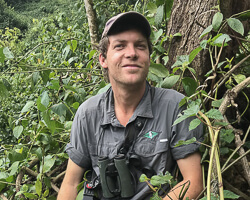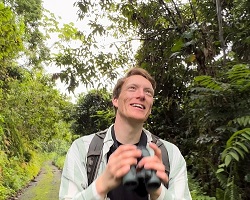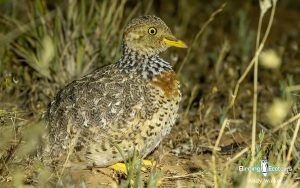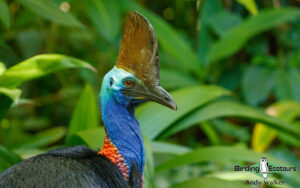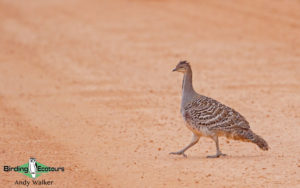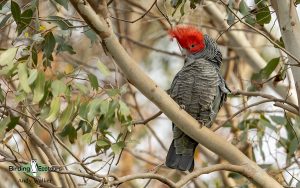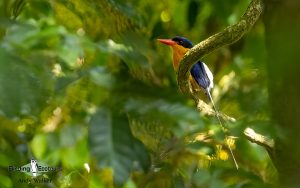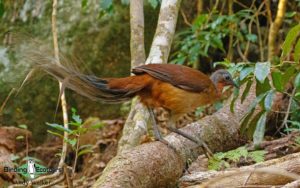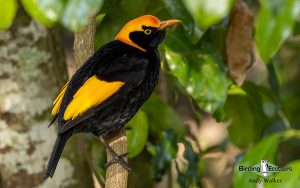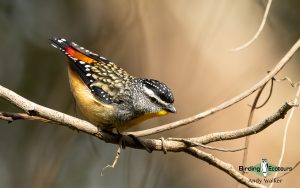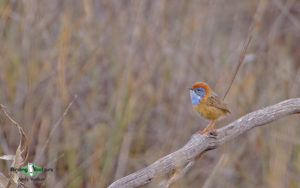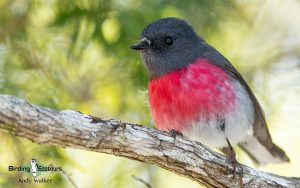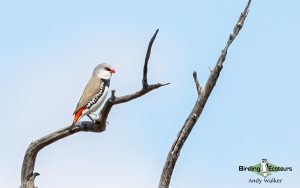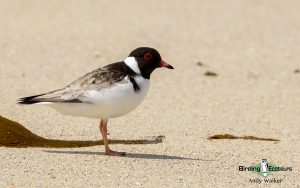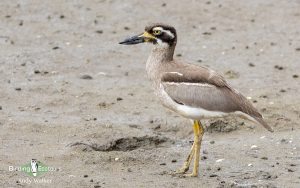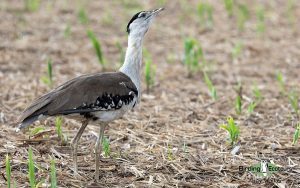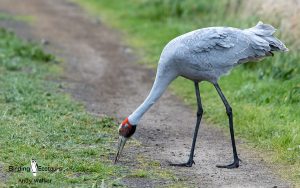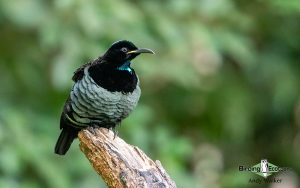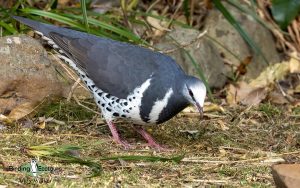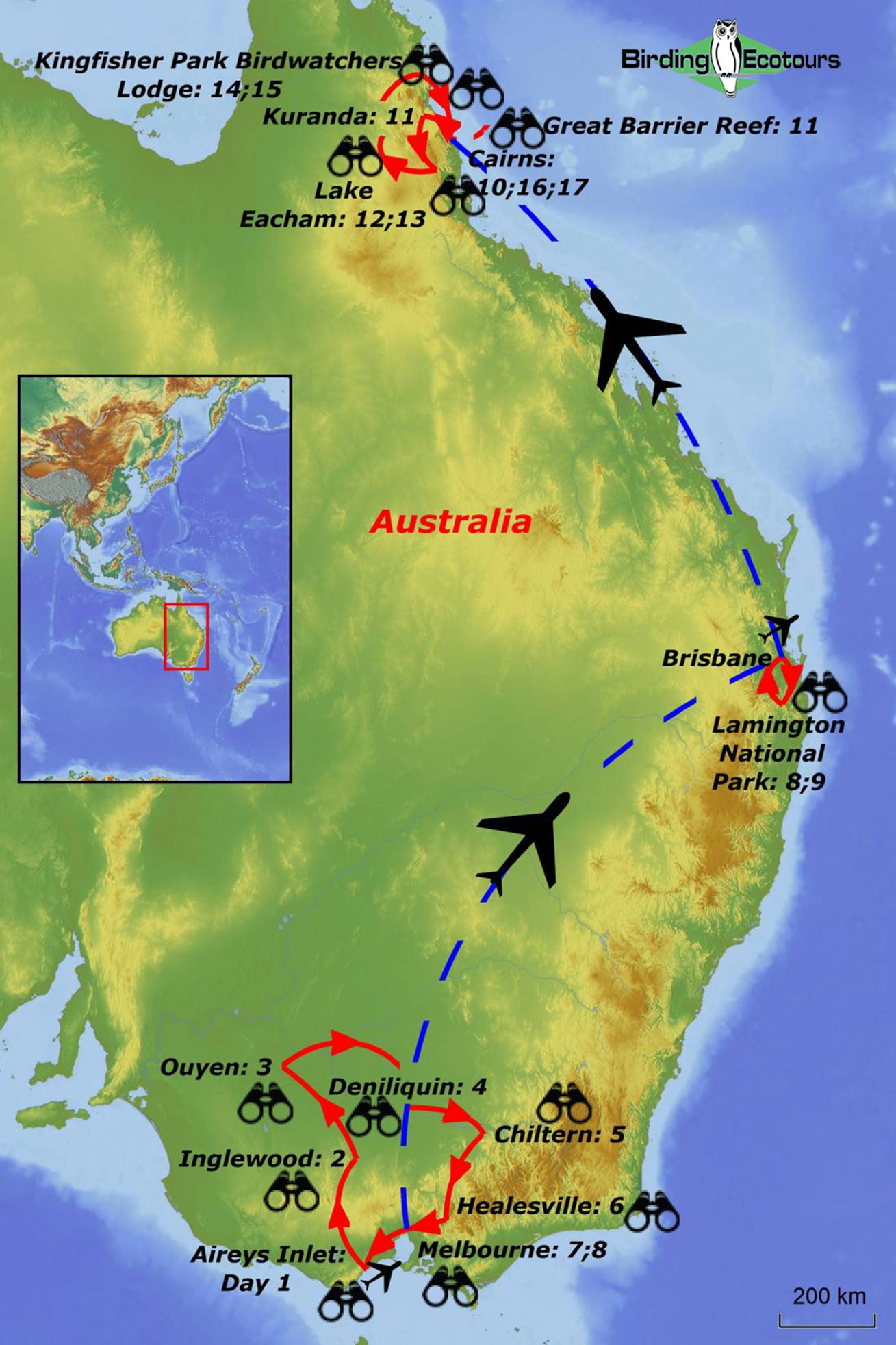Birding Tour Australia: from the Outback to the Wet Tropics
Eastern Australia: from the Outback to the Wet Tropics
October 2025/2026/2027
Australia, the island continent, is a remote landmass that drifted away from Antarctica tens of millions of years ago. Without significant volcanic activity and other mountain-building forces it is also the flattest continent, with the world’s oldest soils. Despite its lack of topography this incredible landmass is one of extremes. The Outback, the continent’s core, is a vast and hostile desert with unpredictable weather patterns that sometimes flush the landscape green. Along the edges more regular precipitation allows ancient rainforests, heathlands, and fire-resistant sclerophyll woodlands to grow. Due to its long isolation and harsh environments Australia is now home to birds of a different feather, including eight endemic bird families and a further seven shared only with neighboring New Guinea. About 300 bird species are endemic to Australia, making it second only to Indonesia in this regard. Throughout this country’s every extreme its amazing avifauna has shown the adaptability and resiliency to survive in even the most challenging environments. In addition, this avifauna is just dripping with charismatic species, from bowerbirds to parrots to fairywrens to kookaburras to cassowaries to lyrebirds. Throughout the course of this small-group tour we sample habitats ranging from the arid plains north of Deniliquin to the wet rainforests of the Atherton Tablelands in search of as many of these wonderful birds as possible, while also appreciating the many other unique plants and animals along the way.
The incredible birds and wildlife of eastern Australia: a virtual birding tour by Andy Walker (who guides our Australian tours). This presentation was part of the highly recommended SE Arizona birding festival hosted by the Tucson Audubon Society (also see their YouTube channel here).
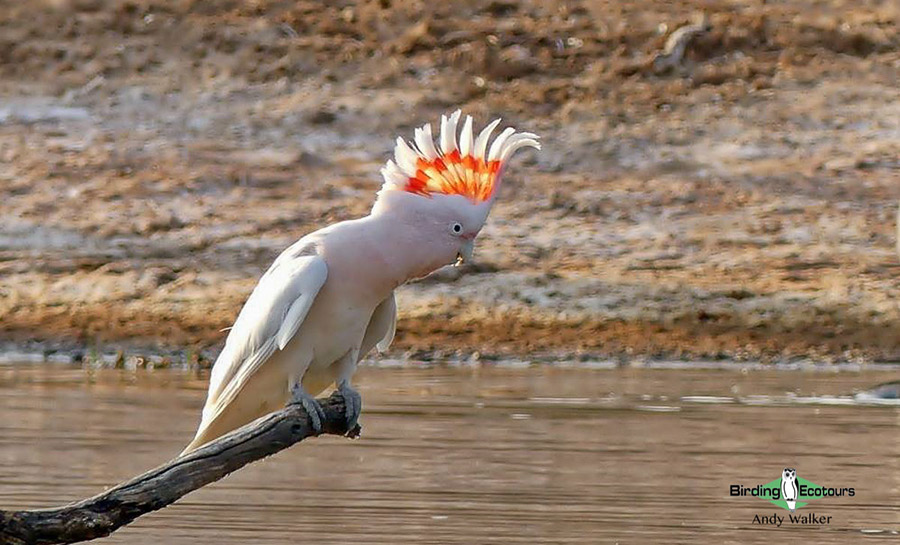
Our journey begins at the cosmopolitan city of Melbourne, Victoria in southeast Australia, visiting coastal heathland for several localized habitat specialists such as Gang-gang Cockatoo and Beautiful Firetail. Farther north and west towards the interior, arid mallee vegetation and saline lakes provide habitat for the mound-building Malleefowl, the impossibly blue Splendid Fairywren, the gorgeous Pink Cockatoo, among a host of other species. On one evening we make a special effort to observe the monotypic Plains-wanderer in the dry plains north of Deniliquin in New South Wales.
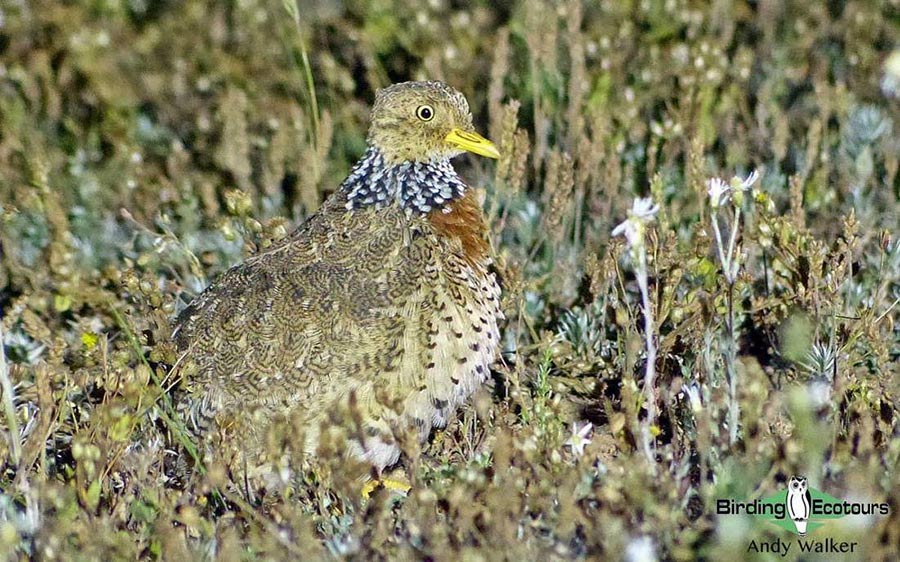
Following our time in New South Wales we will swing southeast through the sclerophyll forests of Chiltern and the temperate forests near Melbourne for targets such as Turquoise Parrot and Superb Lyrebird.
After an internal flight from Melbourne to Brisbane, Queensland, we drive up to the famous O’Reilly’s Rainforest Retreat, nestled within a large tract of subtropical rainforest, for a totally new set of stunning birds such as Paradise Riflebird, Regent Bowerbird, Satin Bowerbird, Noisy Pitta, Albert’s Lyrebird, and Australian Logrunner.
On the last leg of our journey we visit the Wet Tropics of far northern Queensland to explore one of the world’s most ancient rainforests for key species such as Southern Cassowary and Buff-breasted Paradise Kingfisher. We also take a day trip to the Great Barrier Reef, where the colors and diversity of the fish and corals rival those of the birds, with a chance to swim with Green Turtles. Evening spotlighting sessions on many of these nights should also produce a host of endearing and unusual nocturnal birds and mammals, which may include Papuan Frogmouth and Barking Owl. Other target birds in the north include Great-billed Heron, Australian Bustard, Victoria’s Riflebird, Tooth-billed Bowerbird, Great Bowerbird, Golden Bowerbird, Fernwren, and Chowchilla to name a few.
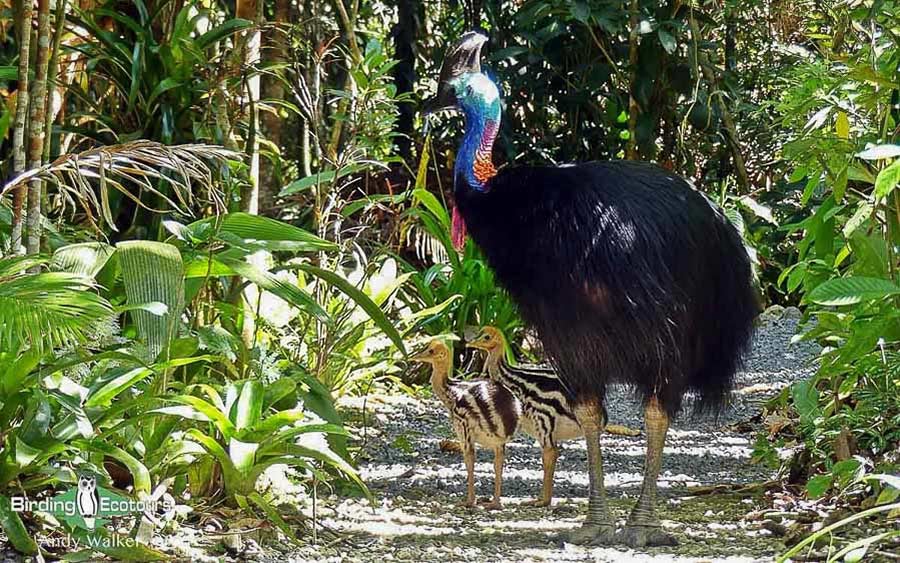
During our time in Australia, we will also look for some of the country’s incredible and unique animals, including Platypus, Short-beaked Echidna, Koala, Red Kangaroo, Eastern Grey Kangaroo, Common Ringtail Possum, Common Brushtail Possum, Musky Rat Kangaroo, and Common Wombat. The birds in Australia are incredible, but so are the mammals, reptiles, and amphibians that we will see; they combine to result in an awesome wildlife-filled experience. This continent is a naturalist’s dream!
Sometimes we do this tour in the reverse order shown in this itinerary. Please confirm the route for your tour with us before purchasing your flight tickets.
For those wishing to continue exploring Australia (and we fully recommend it), this tour can be combined with our Birding Tour Australia: Tasmania Bird Tour – Tasmanian Endemics and the Orange-bellied Parrot tour.
Itinerary (18 days/17 nights)
Day 1. Arrival in Melbourne
Non-birding day with your arrival into Melbourne airport, the rest of the day will be at your leisure. We will meet in our hotel near the airport for an evening welcome dinner together.
Overnight: Melbourne Airport Hotel
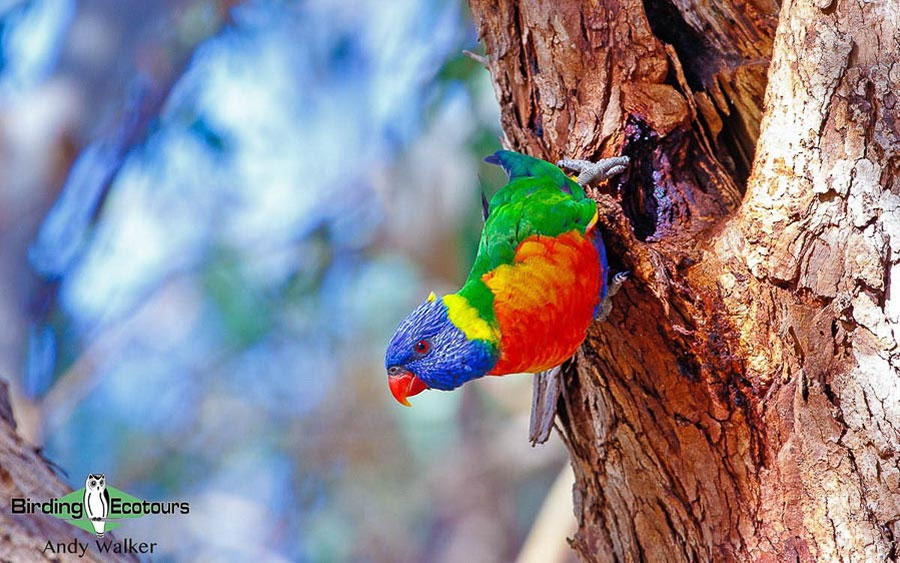
Day 2. Melbourne to Aireys Inlet
Over the course of the day we will enjoy some of Australia’s common and widespread, yet beautiful and interesting birds, such as Magpie-lark, Rainbow Lorikeet, Sulphur-crested Cockatoo, Willie Wagtail, Laughing Kookaburra, and Australian Magpie.
We will drive around Melbourne to the world-famous Werribee Western Treatment Plant area along the coast. Included in the Ramsar list of Wetlands of International Importance in 1983, this extremely rich, huge area contains a network of sewage treatment lagoons, unmodified saltmarsh, creeks, and lakes, which host large numbers of both sedentary and migratory waterbirds. We will navigate a series of roads around this area, where water levels permit. Among a wide assortment of other species Freckled Duck, Pink-eared Duck, and Musk Duck will be top priorities, as well as the secretive Australian Crake and the highly localized Striated Fieldwren. The area is often great for raptors, and we may find Black-shouldered Kite, Wedge-tailed Eagle, Australian Hobby, and Brown Falcon.
We then continue southward along the coast to Aireys Inlet for the night. Along the way a few stops may produce Southern Emu-wren, Black-tailed Nativehen, Black-fronted Dotterel, Cape Barren Goose, and White-winged Chough. Maybe we will even spot our first Eastern Grey Kangaroo along the way!
Overnight: Aireys Inlet
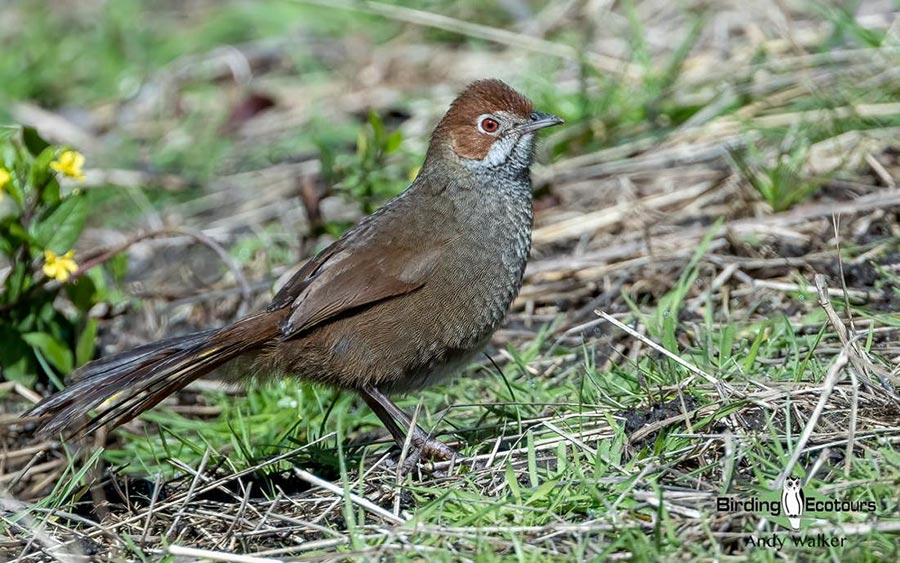
Day 3. Aireys Inlet to central Victoria
Composed of dense, low shrubs and scattered, twisted trees, coastal heathland occurs on impoverished soils with poor drainage. Despite the nutrient-poor soils, this habitat boasts a high diversity of plants as well as a unique community of birds that depend on them. We spend most of the morning exploring the scenic coastal heathlands of southwest Victoria, seeking out some of these species, such as Southern Emu-wren, Beautiful Firetail, and Rufous Bristlebird. Areas of taller vegetation may host the endearing Gang-gang Cockatoo, while a sea watch may yield Black-browed Albatross, Australasian Gannet, and other pelagic birds offshore.
As the day progresses, we drive inland into central Victoria for our first taste of box-ironbark forest, a habitat endemic to Australia. Because the component tree species in this habitat are such prolific flower and nectar producers, there is a correspondingly high diversity of nectar-feeding honeyeaters and lorikeets, including the normally scarce and local Purple-gaped Honeyeater, White-fronted Honeyeater, and Purple-crowned Lorikeet.
Overnight: Inglewood
Day 4. Central Victoria to Ouyen
After some brief morning birding around Inglewood we continue to the Ouyen area in northwestern Victoria. Along the way we will stop at Lake Tyrrell, a salt-crusted and mostly dry lakebed surrounded by saltbush and samphire. Despite its unlikely appearance this low vegetation is home to several charismatic birds, such as Orange Chat, White-winged Fairywren, and Eastern Bluebonnet, which we will target during our time here.
Founded in 1921, Wyperfeld National Park protects a significant tract of semi-arid mallee woodland and heathland. Depending on local conditions we may visit this site as we are passing. High on our list of priorities here would be the appropriately named Malleefowl, Southern Scrub Robin, Splendid Fairywren, and Southern Whiteface, and other birds of the dry Australian interior are also possible.
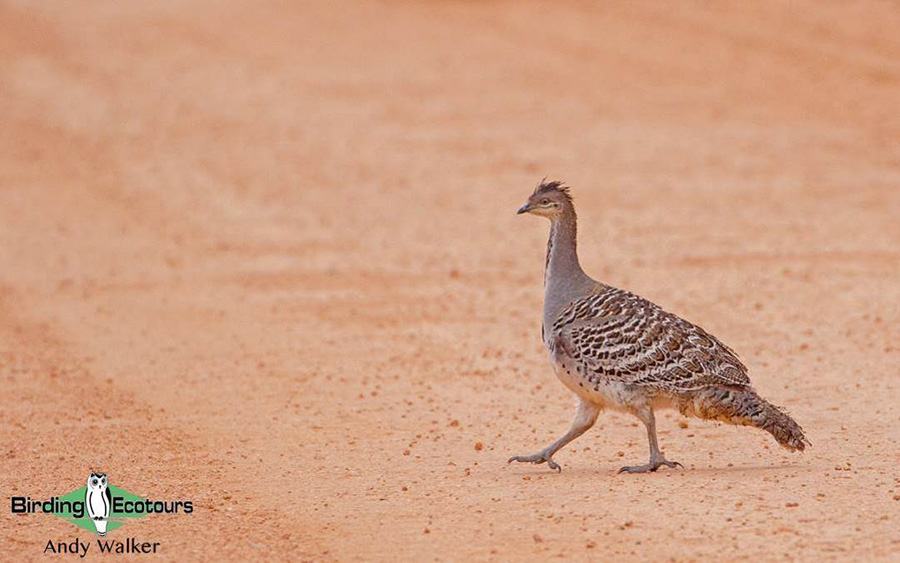
In the late afternoon we will arrive in Ouyen in the mallee habitat. Due to the number of secretive and highly sought birds here we will spend two nights and days birding the area, giving us plenty of time to try and connect with some of the arid area’s great birds like Malleefowl, notable for incubating its eggs in large nesting mounds.
Overnight: Ouyen
Day 5. Birding Hattah-Kulkyne National Park
As one of Australia’s largest and most pristine mallee reserves, Hattah-Kulkyne National Park boasts a wide variety of bird species that are much more difficult to see elsewhere, such as Mallee Emu-wren and Striated Grasswren. We will spend the full day birding within and around the park and town. In addition to the species mentioned above we will be looking for one of the most spectacular parrots in all of Australia, Pink Cockatoo. Hopefully the cockatoo will be accompanied by a rich and colorful supporting cast of dry-country specialties, such as Regent Parrot, Mulga Parrot, Crested Bellbird, and Emu. Possibly we will have our first look at the huge Red Kangaroo here too.
Overnight: Ouyen
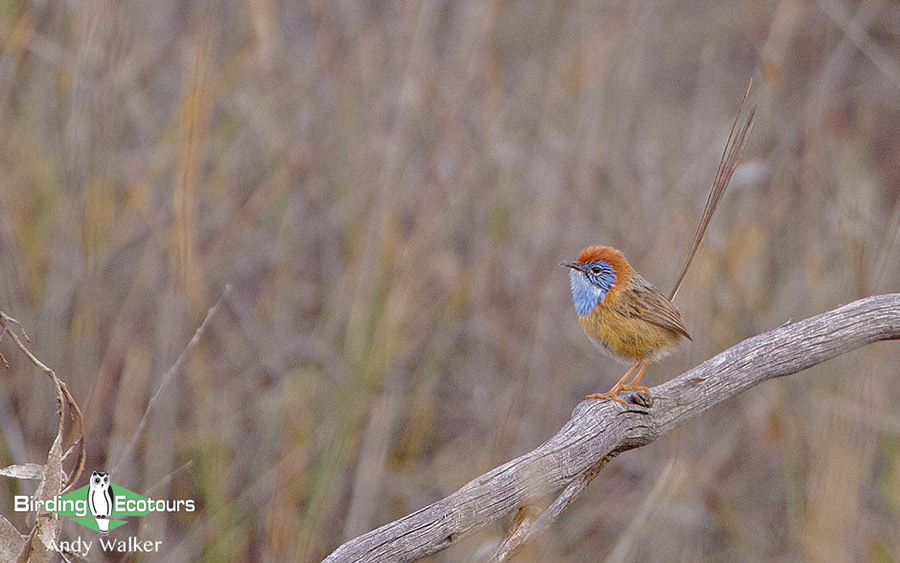
Day 6. Hattah-Kulkyne National Park, travel to Deniliquin, and Plains-wanderer night trip
We will have another morning birding in the wonderful Hattah-Kulkyne National Park, where we will continue to seek out the area’s specialties, maybe including White-winged Chough, Apostlebird, Chestnut Quail-thrush, and many more. As the morning progresses, we will head out of Victoria into neighboring New South Wales. We will likely stop at Lake Tutchewop along the way, which, depending on water levels, may hold the elegant Red-necked Avocet and the dapper Banded Stilt.
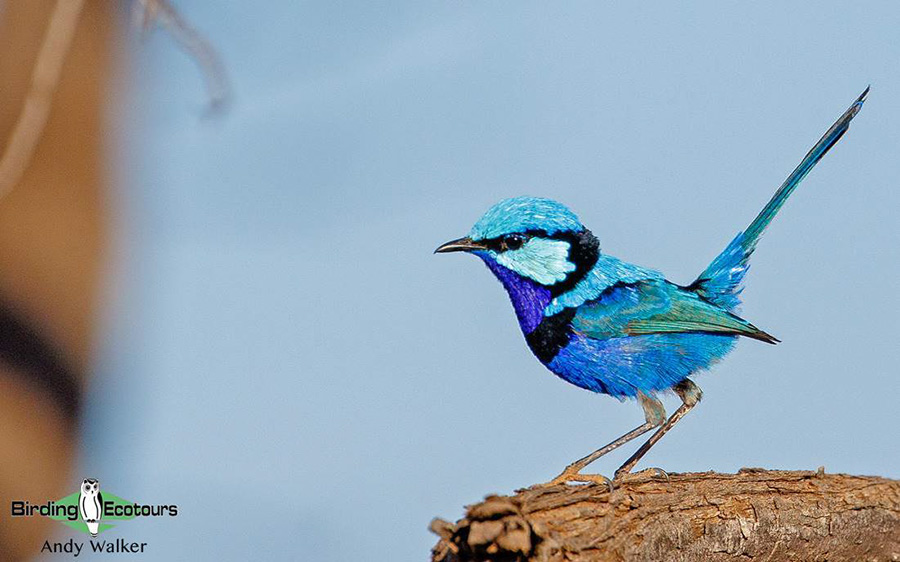
We will have a long day today, because during the evening we will go out to search for the bizarre Plains-wanderer, the sole representative of an endemic Australian family, most closely related to the shorebirds (but its closest living relatives are thought to be the seedsnipes of South America!). Although this species is the star attraction of this site, we may also encounter other birds, such as Inland Dotterel, Banded Lapwing, Stubble Quail, Little Buttonquail, Eastern Barn Owl, or Australian Owlet-nightjar on this nocturnal foray.
Overnight: Deniliquin
Day 7. Transfer to Wangaratta via Gulpa Island
After a late night we allow ourselves to sleep in before continuing our journey to Wangaratta via Gulpa Island and various other sites in the Riverina bioregion. Targets on this more laid-back day include the vivid Superb Parrot, the elusive Gilbert’s Whistler, and the striking White-backed Swallow as we aim to arrive in Wangaratta in the midafternoon. We will start looking for some of the birds listed for Day 8 if time permits.
Overnight: Wangaratta
Day 8. Wangaratta to Healesville
We will spend the morning birding in the beautiful woodland around the Warby-Ovens National Park which protects what is arguably the best flora and fauna assemblage of box-ironbark forest and woodland in Australia and forms an important link between the foothills of the Australian Alps with the plains of the Murray River. The trees which define this habitat produce an abundance of nectar when flowering, attracting birds from far and wide. The sounds of birds can be almost deafening during these times! Targets attracted to these blooms include Little Lorikeet, Black-chinned Honeyeater, and Painted Honeyeater. Elsewhere in the forest we search for the rainbow-like Turquoise Parrot, the bark-peeling Eastern Shriketit, the ground-dwelling Speckled Warbler, and more. We may even come across the unusual Short-beaked Echidna here.
After lunch we continue our journey southward to the town of Healesville near the city of Melbourne for the night. Here we will have a chance for some evening spotlighting for birds such as Greater Sooty Owl and mammals, possibly possums and gliders.
Overnight: Healesville
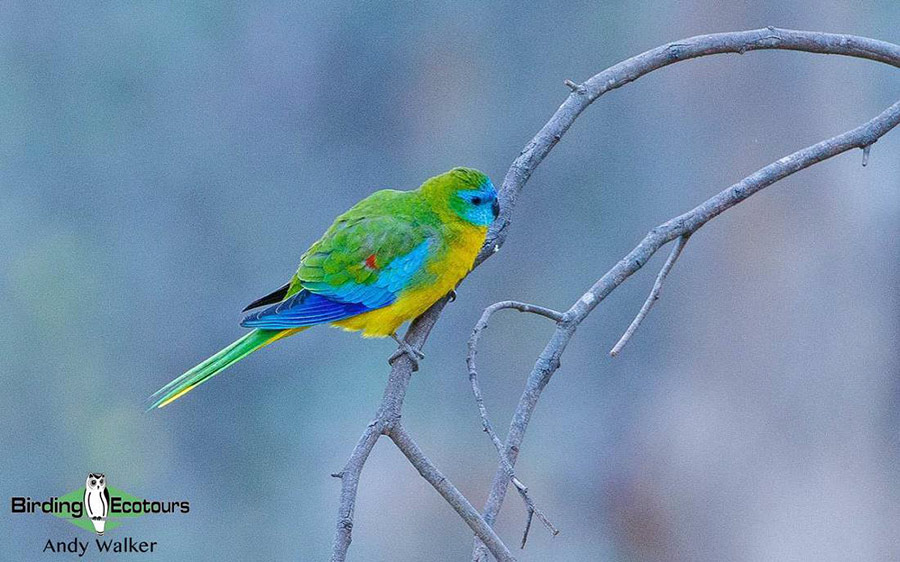
Day 9. Birding near Melbourne and conclusion of the “Outback” part of the tour
We spend most of the day at Bunyip State Park, about 40 miles (60 kilometers) east of Melbourne, birding wet sclerophyll forest and swampy heathlands. Within these mossy forests we hope to find several of Australia’s most charismatic and emblematic birds. Superb Lyrebird, an unrivalled mimic and the world’s largest songbird, will be chief among our targets. The forest and heathland communities are also home to Yellow-tailed Black Cockatoo, Pilotbird, Olive Whistler, Eastern Whipbird, Flame Robin, Rose Robin, Pink Robin, Red-browed Treecreeper, Australian Rufous Fantail, and more. It is sure to be a wonderful end to the birding on this part of the tour. We will continue back to Melbourne, thus completing our circuit of Victoria, where we will spend the night in an airport hotel ahead of an early flight the next day.
Overnight: Melbourne
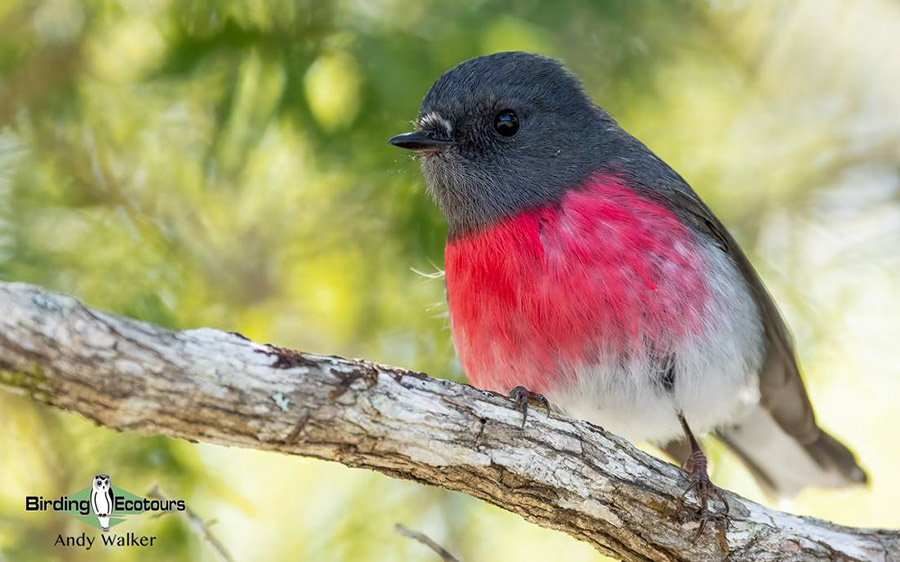
Day 10. Transfer from Melbourne to Brisbane and to Lamington National Park
After an early morning flight we arrive in Brisbane, the state capital of Queensland, to continue our tour. We first stop at a few mangrove sites near the airport itself, searching for the endemic Mangrove Honeyeater and Mangrove Gerygone. Nearby wetland sites often hold the elusive Spotless Crake, and we could obtain our first sightings of Comb-crested Jacana, Red-backed Fairywren, Torresian Kingfisher, and more while we search for them.
Afterwards we drive to the world-famous O’Reilly’s Rainforest Retreat at Lamington National Park. A colorful and interesting suite of birds attends the lodge gardens here, including Crimson Rosella, Australian King Parrot, Regent Bowerbird, Satin Bowerbird, Australian Brushturkey, and Wonga Pigeon. These birds are unusually tame and provide excellent opportunities for photography and our time here is always a major tour highlight.
Overnight: Lamington National Park
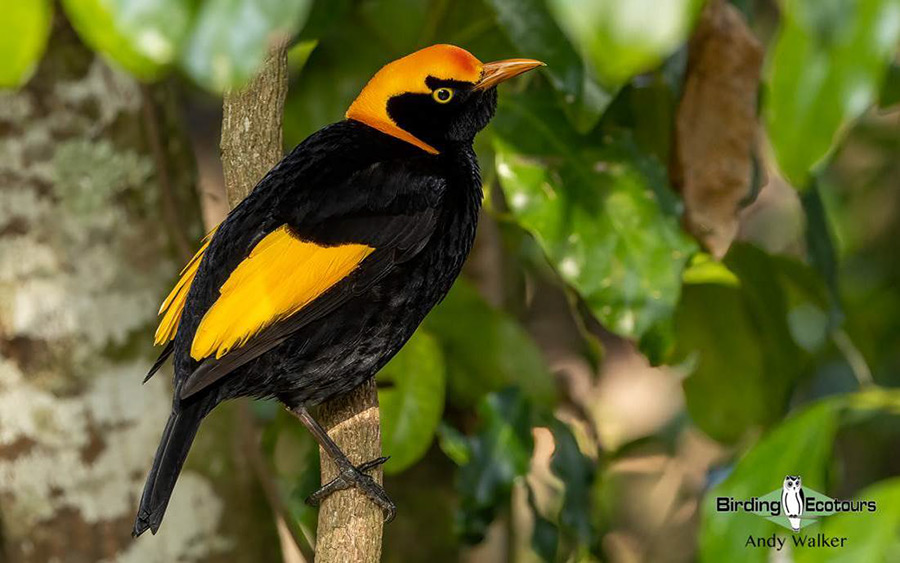
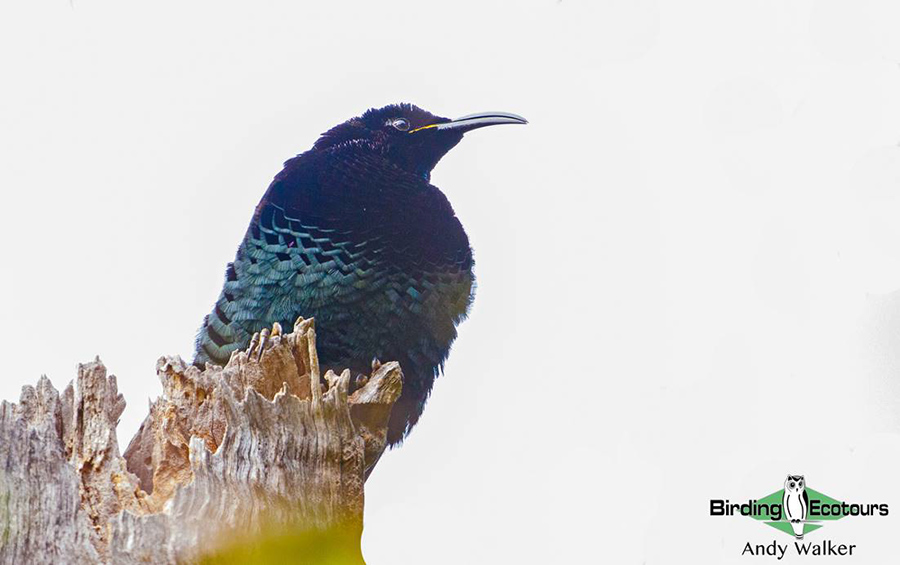
Day 11. Full day birding Lamington National Park
Situated in the heart of Lamington National Park, O’Reilly’s Rainforest Retreat is well-known for its rainforest location, diverse wildlife, and interesting history. Using the lodge as our base we spend the full day exploring the verdant network of subtropical rainforest trails in search of several spectacular birds unique to the area. Albert’s Lyrebird, Australian Logrunner, and Noisy Pitta inhabit the forest understory, while birds in the mid-story and canopy include Paradise Riflebird, Topknot Pigeon, Black-faced Monarch, and Green Catbird. We will make a concerted effort to see all of these species during our stay as well as leaving time to enjoy the site’s good variety of mammals, a good number of which only come out at night.
Overnight: Lamington National Park
Day 12. Transfer from Brisbane to Cairns, birding the Cairns Esplanade
We will have a pre-breakfast birding walk into the forest near our accommodation once again, where we will keep searching for new and interesting species, maybe finding a cryptically plumaged Bassian and Russet-tailed Thrushes or the gorgeous and rather cute Rose Robin. After another sumptuous O’Reilly’s breakfast, we drive off the mountain and head back toward the city in time to make our flight farther north on our tour of the Australian east coast.
When we arrive in Cairns, depending on the tide time, we might make the short jaunt from our hotel to the Cairns Esplanade to enjoy its variety of shorebirds, from the hulking Far Eastern Curlew to the dainty Terek Sandpiper. We are sure to see plenty of Torresian Imperial Pigeons, Australasian Figbirds, and Metallic Starlings flying around near our accommodation.
Overnight: Cairns
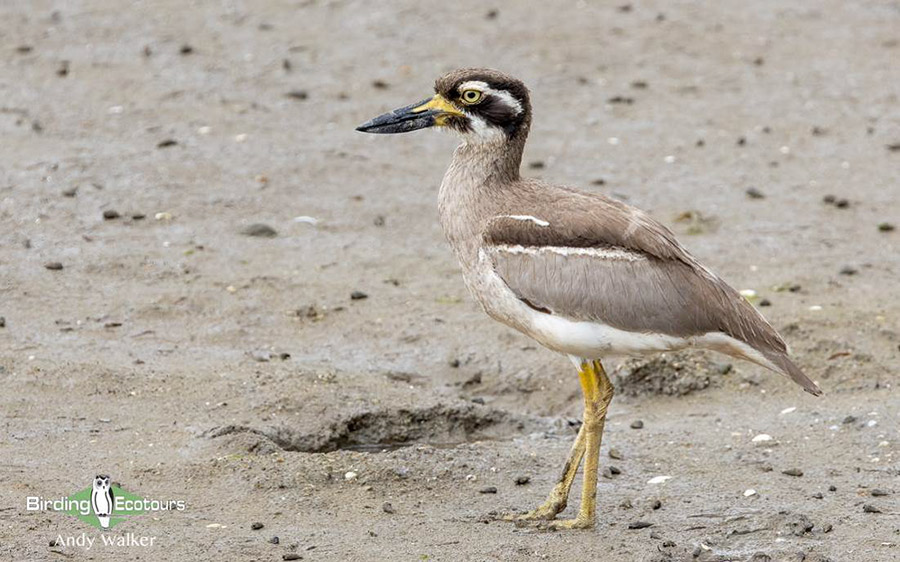
Day 13. Cairns birding and travel to Mission Beach
We will spend the morning birding at sites around Cairns, and may include visits to the Cairns Esplanade, Cairns Botanical Garden, and Cairns Centenary Lakes. We may also visit some sites a little further out of town, time permitting. A large list of species is possible featuring a wide range of birds. If the tidal situation is right, we can expect a lot of shorebirds, likely to include Great Knot, Curlew Sandpiper, Grey-tailed Tattler, and with luck, Beach Stone-curlew. In and around the trees along Cairns Esplanade, we may find Nankeen Night Heron, Bush Stone-curlew, Double-eyed Fig Parrot, Varied Honeyeater, Yellow Honeyeater, and Hornbill Friarbird. Forested areas here may hold Orange-footed Scrubfowl, Australian Brushturkey, Brush Cuckoo, and Grey Goshawk.
After lunch we will commence our journey south towards Mission Beach. We will likely make a stop at Etty Bay along the way. Our main target in this area is the humongous and rare Southern Cassowary, the largest bird in Australia by weight.
Overnight: Mission Beach
Day 14. Birding near Mission Beach, travel to Lake Eacham
We will spend some time in the morning looking for Southern Cassowary. There are often other great birds to be found around Mission Beach, and we will try to locate these during the morning before departing and heading up into the Atherton Tablelands. Some other birds we might find while looking for the ancient dinosaur-like bird, might include Australian Swiftlet, Fairy Gerygone, Yellow-spotted Honeyeater, Spectacled Monarch, Black Butcherbird, Green Oriole, and Dusky Myzomela.
Overnight: Deniliquin
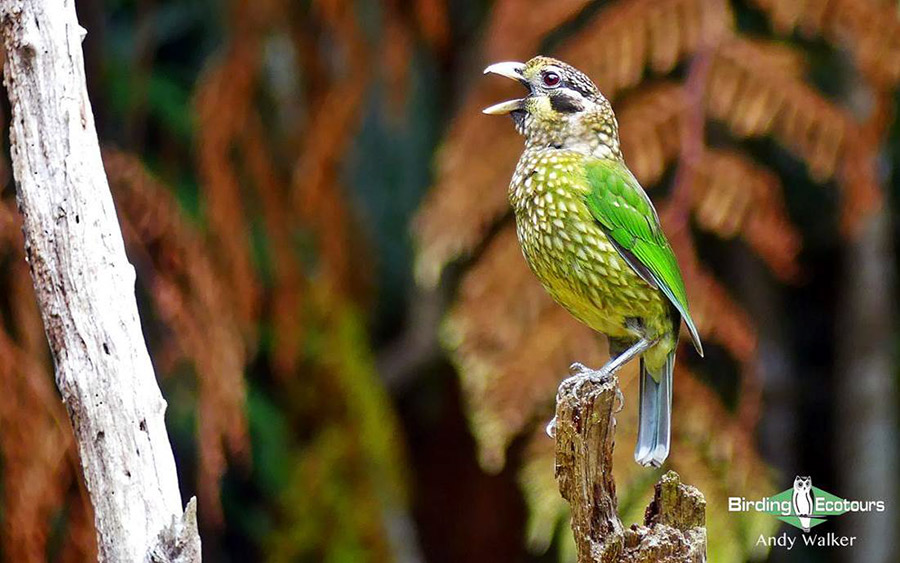
By mid-morning it will be time to leave the coast behind. We will spend the course of the next two days visiting a variety of sites on the Atherton Tablelands, a fertile plateau hosting several habitats from high altitude rainforest to drier eucalypt woodland. Although we will keep our itinerary flexible, based on our growing trip list, we will likely spend time birding the cooler wet forest of Mount Hypipamee National Park, Lake Barrine, and the Curtain Fig Tree for species including Tooth-billed Bowerbird, Golden Bowerbird, Wompoo Fruit Dove, Grey-headed Robin, Chowchilla, and more. We can, with some luck, also find Victoria’s Riflebird and Spotted Catbird in the gardens of our accommodation at Lake Eacham, a wonderful spot itself.
Nocturnal activity is also often exciting here, and we will be sure to spend some time looking for a range of possums, gliders, and more, as well as for the diurnal Musky Rat Kangaroo. Here we will also have a search for the bizarre Platypus and unusual (and rather rare) Lumholtz’s Tree Kangaroo.
Overnight: Lake Eacham
Day 15. Birding in the Atherton Tablelands
The early morning activity around our accommodation is usually a wonderful experience and we will look for, and listen to Spotted Catbird, Victoria’s Riflebird, Yellow-breasted Boatbill, Australian Golden Whistler, Grey-headed Robin, Superb Fruit Dove, Wompoo Fruit Dove, Brown Cuckoo-Dove, Macleay’s Honeyeater, Scarlet Myzomela, and Forest Kingfisher.
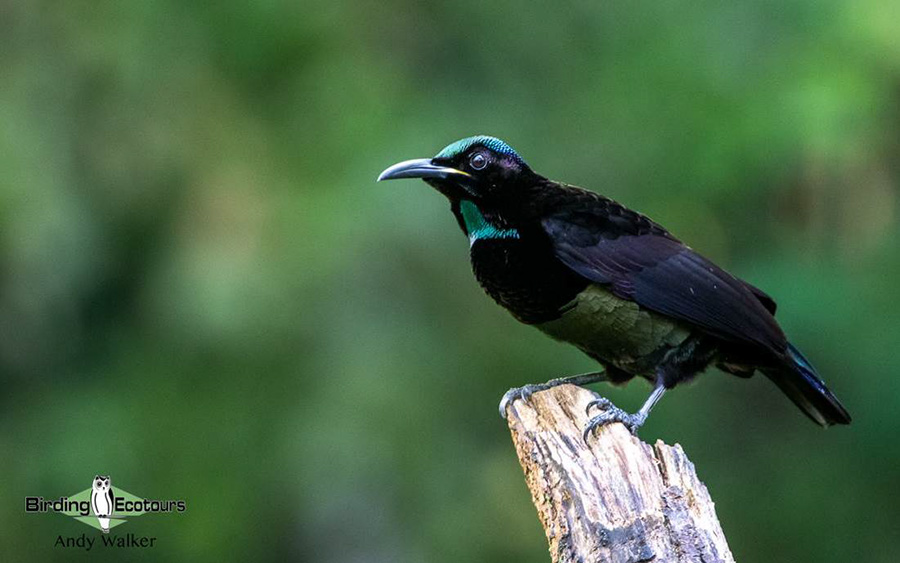
During the day we will visit the wetter higher elevations of the Atherton Tablelands, possibly trying to locate the shy Chowchilla and other targets like Atherton Scrubwren, Mountain Thornbill, Tooth-billed Bowerbird and Golden Bowerbird. We will also look for any wetland sites that might support Magpie Goose, Sarus Crane, Brolga, Wandering Whistling Duck, or Plumed Whistling Duck and potentially shorebirds and other waterfowl (depending on water levels here and in other parts of Australia).
In the afternoon we will make our way northward into the much drier part of the Atherton Tablelands, stopping at various sites, which may include Granite Gorge Nature Park and Mareeba town. There will be no shortage of potential targets, such as Australian Bustard, Squatter Pigeon, Red-winged Parrot, Red-tailed Black Cockatoo, Spotted Harrier, Blue-winged Kookaburra, Great Bowerbird, and Double-barred Finch. After a long day of birding, we will arrive at our accommodation.
Overnight: Mareeba
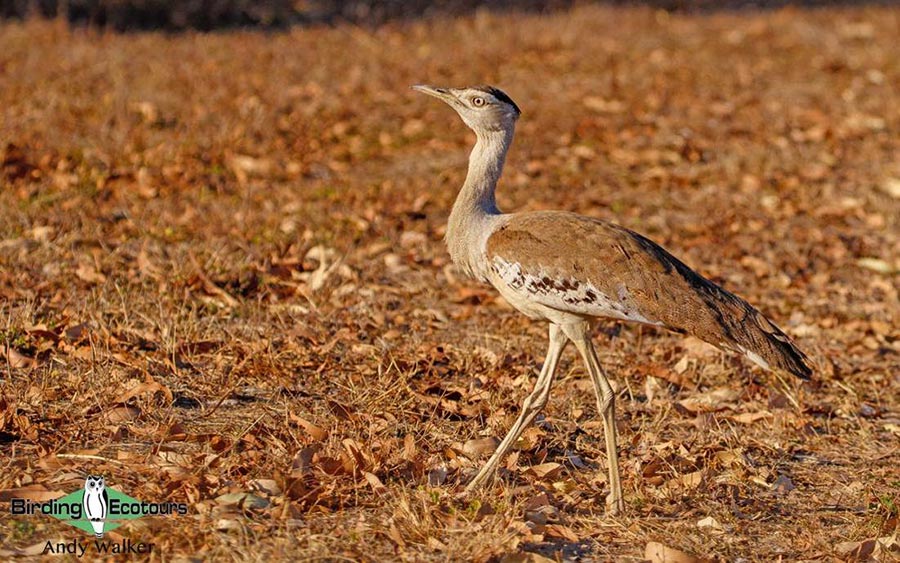
Day 16. Mareeba, Daintree River Cruise, and travel to Cairns
We will have a long day today. We will spend the early morning birding near to Mareeba and will make our way to the base of Mount Lewis. We will make a few stops along the way, for species such as Yellow-bellied Flyrobin and White-browed Robin. At the base of Mount Lewis, we will look for Lovely Fairywren, Superb Fruit Dove, Northern Fantail, and Buff-breasted Paradise Kingfisher.
In the afternoon we will start the journey down to the Daintree River, where we will have a late-afternoon boat cruise. By scanning the sandy banks and lush riverside vegetation from the comfort of our boat we will keep a sharp eye out for the bulky Great-billed Heron, family groups of Shining Flycatcher, the cryptically camouflaged Papuan Frogmouth, and flocks of the diminutive Double-eyed Fig Parrot – maybe even the rare Little Kingfisher.
We will stop for some dinner on our way back to Cairns, where we will arrive in the early evening and head to bed after what will have been a long and tiring, but bird-filled day.
Overnight: Cairns
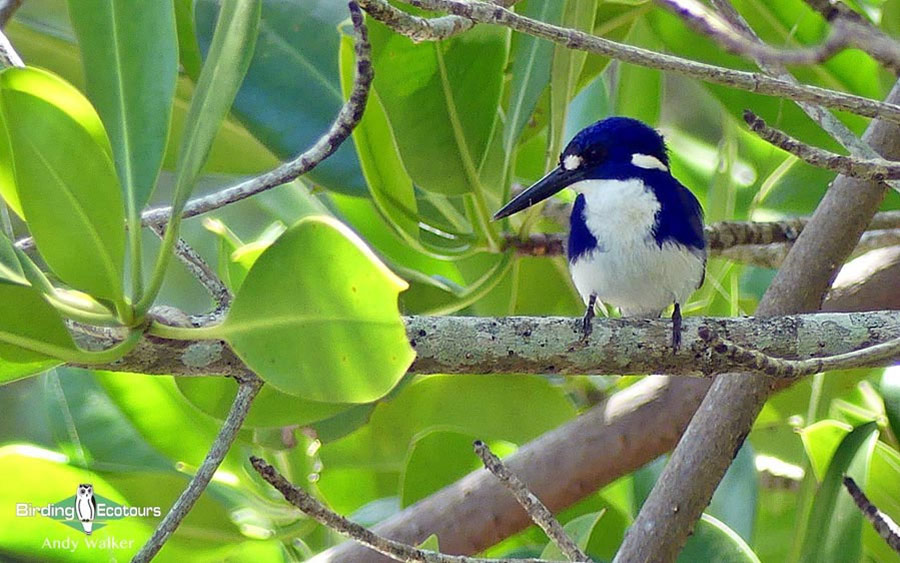
Day 17. Great Barrier Reef trip
We will spend the final full day of the tour on an enjoyable and relaxing boat trip to the Great Barrier Reef. The Great Barrier Reef is an ecosystem of many superlatives that no words can do justice. After an early breakfast we board a boat that will take us out to experience this incredible reef system. Our first stop is Michaelmas Cay, a tiny islet that hosts an impressive number of nesting seabirds. Sooty Tern, Brown Noddy, and Greater Crested Tern dominate, but Lesser Crested Tern, Black Noddy, and Black-naped Tern are also possible. Brown Booby and occasionally Red-footed Booby can be seen perched on man-made structures, while marauding Great and Lesser Frigatebirds often soar overhead. We will spend some time here enjoying the spectacle. Weather and sea conditions permitting, we should be able to land on the cay to get close-up views of these seabirds. There is also the likelihood of snorkeling here, but for this part of our reef trip the focus is really on the birds, though we will also keep our eyes peeled for dolphins and sea turtles.
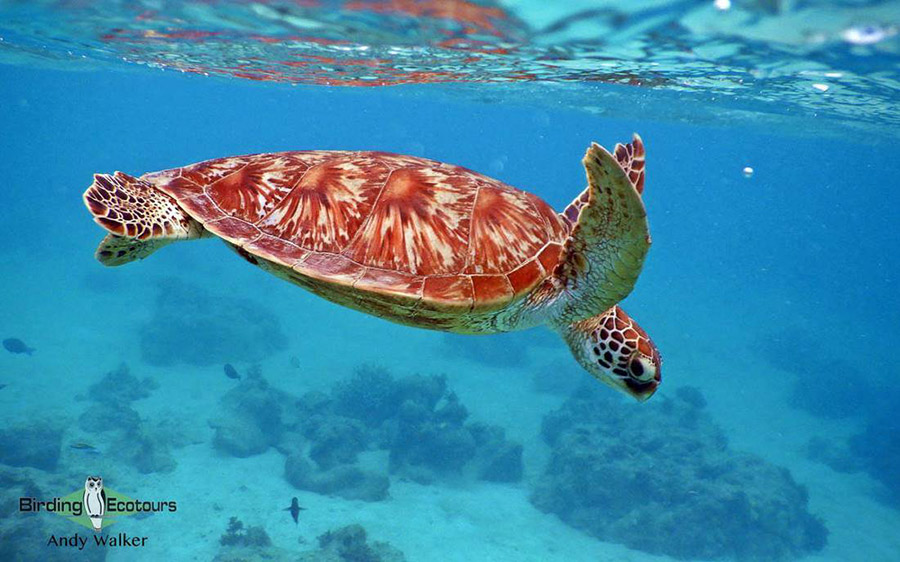
After lunch the boat usually moves across to Hastings Reef, where there will be an option to snorkel, scuba dive, or take a glass bottom boat tour, all three options giving a wonderful opportunity to observe the plethora of shockingly colorful life below the surface. When we return to shore in the middle of the afternoon we will amble back to our hotel, looking for any birds along the Cairns Esplanade as we go (tide dependent).
Overnight: Cairns
Day 18. Transfer to Cairns Airport, tour concludes
Non-birding day with your departure from Cairns Airport.
Overnight: Not included
Please note that the itinerary cannot be guaranteed as it is only a rough guide and can be changed (usually slightly) due to factors such as availability of accommodation, updated information on the state of accommodation, roads, or birding sites, the discretion of the guides and other factors. In addition, we sometimes have to use a different international guide from the one advertised due to tour scheduling.
Download ItineraryEastern Australia: From the Outback to the Wet Tropics Trip Report, October 2024
29 OCTOBER – 15 NOVEMBER 2024
By Chris Lotz
DOWNLOAD TRIP REPORT
Overview
This year’s eastern Australia birding tour was, as always, an epic success. Traversing large parts of Victoria and Queensland, with a short foray into New South Wales, we accumulated a bird list of 378 bird species, 28 mammals, 16 reptiles, many beautiful butterflies and stacks of fascinating plants.
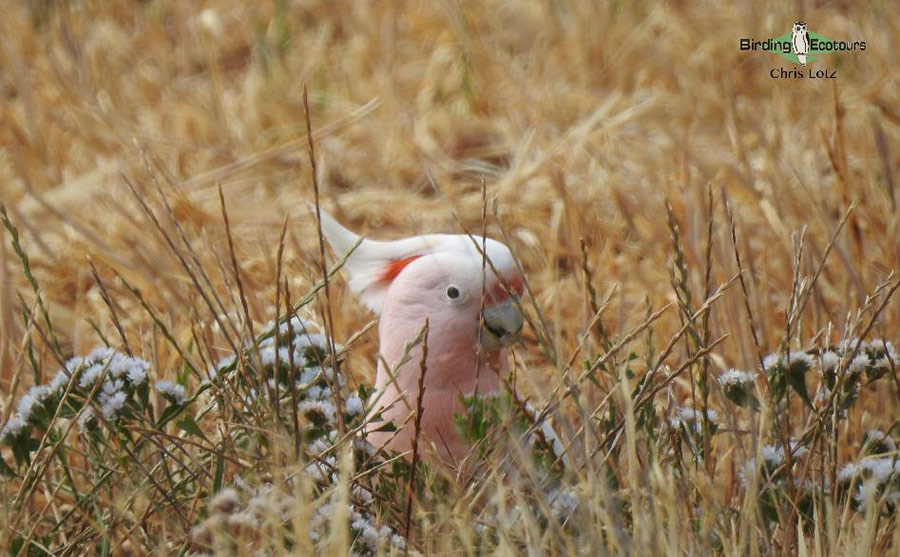
One of two Pink Cockatoos that foraged on the ground right next to us.
Australia is immense, and covering a large portion of the eastern states is tough to do in 18 days, nevertheless, we managed to see some of the most iconic birds and mammals that Australia has to offer. These included both lyrebird species, which we enjoyed seeing and hearing well (they are incredible mimics, and the Albert’s Lyrebird barked like a dog, amongst other things); Plains-wanderer; Southern Cassowaries (including a large chick) walking on the beach; seven fairy-wren species including Lovely, Variegated, Red-backed and Splendid Fairywrens; two emuwren species; Striated Grassbird; Malleefowl; Australian Bustard;27 different parrots including nine cockatoos; 41 honeyeater species; 13 Australasian robins including dazzling ones in the form of Rose Robin, Flame Robin, Scarlet Robin and Red-capped Robin; two frogmouth species at their daytime roosts; Australian Owlet-nightjar, owls including an impressive pair of Powerful Owls at their daytime roost; several bowerbirds including the spectacular Regent Bowerbird; both crane species; a good number of kingfishers including both kookaburras and the extravagantly-plumaged Buff-breasted Paradise Kingfisher; and many others. Do refer to the bird list at the end of this report, as the highlights are far too numerous to list fully here.
Mammals were amazing, and we enjoyed seeing Koala, Platypus, Common Wombat, many macropods (kangaroo types) ranging in size from the massive Red Kangaroo through to the diminutive Musky Rat Kangaroo (with everything in between, such as wallabies and pademelons), and others. Please do refer to the mammal list – and also the reptile list – at the end of this report for the specifics.

Platypus, an egg-laying weirdo mammal!
All in all, this Australia birding tour encompassed varied landscapes, taking us past the cool southern heathlands, beautiful beaches, the Outback, and the tropical rainforests of northern Queensland. As always, this was a great tour for seeing a large variety of Australia’s unique birds and other fauna and flora, and scenery.
Detailed Report
Day 1, 29th October 2024. Arrival in Melbourne
We arrived in Melbourne today and the tour officially started with a 6 pm dinner at the hotel restaurant, where we planned for the exciting days ahead.
Day 2, 30th October 2024. Birding Melbourne to Healesville
The first day of any birding tour is generally very rewarding, with almost all birds being new and stacks of life-birds coming in for everyone. Australia is so full of brightly colored birds, such as a host of parrots, many of which we saw today. We first had to drive through Melbourne, a very interesting experience, providing great views of the downtown area and suburbs. Our first birding stop was within the suburbs of Melbourne: our main aim was to admire a Tawny Frogmouth roosting with its two chicks. This is a truly bizarre nocturnal bird, and it is always good to find a daytime roost. At this same site, we also enjoyed great views of beautiful Rainbow Lorikeets, Musk Lorikeets, Red Wattlebird, Pied Currawong, Grey Butcherbird, Little Raven, Noisy Miner, Magpie-lark and other common Australian birds.
We then headed to Shepherd’s Bush, where we added some more spectacular parrots, including Eastern Rosella and our first of many Sulphur-crested Cockatoos. A Common Bronzewing gave good views, and we scoped some Sacred Kingfishers. An Eastern Yellow Robin showed very well while singing monotonously. We saw our first Yellow-faced Honeyeaters and spectacularly colored Superb Fairywrens. These dazzling fairywrens are super-confiding, and so common in this part of Australia.
While driving to lunch, we saw our first Galahs, yet another awesome parrot and nicely abundant across Australia; pink birds are always good to have around. Over a tasty lunch, we were treated to views of a couple of good raptors: the spectacular Wedge-tailed Eagle (which we saw better at our next stop, though) and a Brown Goshawk.
After lunch, our first birding stop was at Sherbrooke Forest in the Dandenong Ranges National Park. Here, the world’s tallest flowering trees, Mountain Ashes, tower far above beautiful tree ferns closer to the forest floor. Our main target here was Superb Lyrebird, which we saw extremely well, including one adult male with its extravagantly spectacular tail feathers. Equally impressive is the lyrebird’s song; it imitates many other birds very accurately, between bursts of its own song. The supporting cast here included a singing Rose Robin (seemingly an immature male, and we had to wait until we got to Queensland before we saw a “proper” dazzling male), some Australian King Parrots and many Crimson Rosellas (both magnificently colorful parrots), Laughing Kookaburra, Eastern Spinebill, a close-up, intricately-marked Spotted Pardalote, an Eastern Whipbird that showed very well, White-browed Scrubwren, our first of many Brown Thornbills, Grey Shrikethrush and others. What a session!
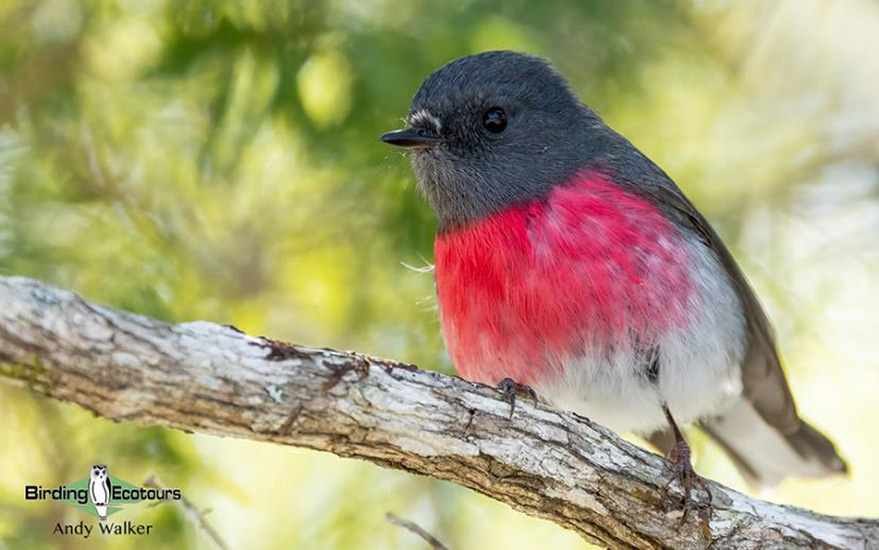
Luckily we saw a proper male Rose Robin later in the tour (this photo is from a previous year)
We then drove to Lillydale Lake, another productive site that gave us further new birds for the trip. These included various waterbirds like Chestnut Teal, Grey Teal, Dusky Moorhen, Australasian Swamphen, Australasian Grebe, Australasian Darter, Australian Reed Warbler, etc. Our first Crested Pigeon showed well: what a stunning bird, another common but beautiful Australian species. A Shining Bronze Cuckoo also gave us great looks.
As we drove to our pleasantly located accommodation, we saw a few Yellow-faced Spoonbills from the car (we’d see them better later in the tour). After checking in we spent an hour regrouping, before a delicious meal.
We ended the day with a night walk. Here, we saw some truly amazing mammals in the form of Southern Greater Glider, Sugar Glider,and a Common Wombat! We heard Australian Boobook, Greater Sooty Owl, and Tawny Frogmouth.
Day 3, 31st October 2024. Healesville to Geelong via the Werribee Western Treatment Plant
We started the day getting some great views of several bird species at the lodge. These included Laughing Kookaburra with its raucous laughing call, Eastern Spinebill, Striated Thornbill, and others.
We then headed to Mt St Leonard, part of the Yarra Ranges National Park. The misty conditions were very atmospheric. As we got out of the minibus, we immediately laid eyes on a gorgeous pair of Flame Robins on the road. An Eastern Yellow Robin showed more fleetingly. A couple of people in the group saw a Bassian Thrush. We got alright views of a Pilotbird, and good views of a couple of White-throated Treecreepers. A group of Large-billed Scrubwrens and a White-browed Scrubwren put in appearances. We saw Pied Currawong again and also found our first Grey Currawong of the trip. A couple of Crescent Honeyeaters were great to see.
After a delicious bakery lunch, we headed back through the city of Melbourne, to the famous (among birders) Werribee Western Treatment Plant. Here, we saw 78 bird species in just under four hours. At the entrance, we scoped a beautiful Brown Falcon.Next, we found 15 Cape Barren Geese (a localized species named after Cape Barren Island in the Bass Strait between the Australian mainland and Tasmania) and a stack of beautiful Australian Shelducks. We were delighted to see a few of the bizarre-looking Pink-eared Ducks among a lot of Chestnut and Grey Teals. Blue-billed Teals, Hardheads, Musk Ducks, and several other wildfowl species. Excitingly, we then encountered a couple of Australian Crakes and Black-tailed Nativehens. Two Brolgas showed well; cranes are always great to see! Shorebirds were much in evidence, with a lot of Pied Stilts and one Banded Stilt, many Red-necked Avocets, a couple of Pacific Golden Plovers, some Black-fronted and Red-kneed Dotterels, many Sharp-tailed Sandpipers, a Pectoral Sandpiper (a rarity from America!), Black-tailed Godwit, Common Greenshank, many Red-necked Stints,and a few Curlew Sandpipers. A mixed flock of Royal and Yellow-billed Spoonbills showed well.
There were countless Black Swans, Hoary-headed Grebes and graceful Whiskered Terns, with smaller numbers of Greater Crested Terns and two Caspian Terns, plus a handful of Great Crested Grebes. An Australasian Gannet flew by offshore. There were a few Little Pied, Little Black,and Great Cormorants, and Australian Pelicans were everywhere. Swamp Harriers were also all over the place, as well as smaller numbers of Black Kites and one Whistling Kite.
Terrestrial birds were also around, including a lot of beautiful Superb Fairywrens and a single Spiny-cheeked Honeyeater. There were a lot of White-fronted Chats, a couple of Yellow-rumped Thornbills, an Australian Pipit and a few Eurasian Skylarks singing and displaying high in the sky above us. A Little Grassbird was also seen. We got great views of Welcome Swallows, many Fairy Martins,and a single Tree Martin. A few Australian Zebra Finches sat along a fence.
Day 4, 1st November 2024. Geelong to central Victoria via the Surf Coast
This morning, we headed first for Point Roadknight along the Great Ocean Road. Our main target here was the striking Hooded Plover (Dotterel) along the beach and we were not disappointed. We enjoyed seeing a few Australasian Gannets, Shy Albatrosses and the spectacular sight of thousands upon thousands of Short-tailed Shearwaters on migration! We found a Black-faced Cormorant on a rock. There were many Red Wattlebirds around, and we even found an Afro-Australian Fur Seal. Just as we were leaving, we found one of the top birds of the day, Gang-gang Cockatoo, a really strange, beautiful parrot. We are thankful to the kind homeowner who saw us looking at them and invited us into her yard to see them even closer up.
We then headed to Googoorah Park, where the highlights were some Blue-winged Parrots and a couple of Yellow-tailed Black Cockatoos flying slowly and gracefully over us, very atmospheric. We also got solid views of a Striated Pardalote and some other species we’d already seen, including the ever-present (in south-eastern Australia) Superb Fairywren.
Anglesea Heath was next on our agenda. A spectacular-looking Scarlet Robin wowed us. We saw our first White-eared Honeyeaters here and also found some Southern Emu-wrens; unfortunately the views of these were quite fleeting. Buff-rumped Thornbills did, however, show well, and we also saw a Forest Raven.
We then went to Distillery Creek Picnic Area in the Great Otway National Park. White-naped and White-eared Honeyeaters as well as White-throated Treecreepers showed well here. A Satin Flycatcher and some Red-browed Finches also gave good views.
Our final coastal birding stop before turning inland and crossing the Great Dividing Range was Split Point. Here we saw a great many more migrating Short-tailed Shearwaters, our first Singing Honeyeaters, and awesome views of Rufous Bristlebird.
Day 5, 2nd November 2024. Central to northern Victoria
Today we enjoyed some extremely productive birding in central Victoria, before heading to Mildura on the Murray River, which forms the boundary with New South Wales. We started the morning at the Inglewood Nature Conservation Reserve where we managed to get close views of a Painted Buttonquail. We also saw a pair of dazzlingly beautiful Red-capped Robins.There were also many other new birds for the trip here: Shy Heathwren, Yellow Thornbill, Inland Thornbill, Weebill, Western Whistler, Rufous Whistler, Brush Bronzewing, many Yellow-tufted Honeyeaters, a White-fronted Honeyeater, a few White-headed Honeyeaters, and a few Brown-headed Honeyeaters, plus a rather fleeting Tawny-crowned Honeyeater that sadly didn’t show well.
Our next stop was at Mount Korong Nature Conservation Reserve, which was just as productive as our previous stop. Two of the star birds here were Painted Honeyeaters and Diamond Firetails, both of which showed extremely nicely and are beautiful birds. Also new for the trip was a flock of Long-billed Corellas, some Red-rumped Parrots, a couple of Brown Treecreepers, a lot of White-plumed Honeyeaters, and a Hooded Robin.
We then visited Lake Tyrrell Wildlife Reserve. A real delight here was getting great views of our second (of seven) fairywren species for the tour, Purple-backed Fairywren. We also saw a Rufous Fieldwren a couple of times as it sang from atop low bushes. Black-faced Woodswallows provided good views.
Our final stop of the day before heading to our accommodation to check in was in the Hattah-Kulkyne National Park, which protects some pristine mallee vegetation. Here, the star bird was the Vulnerable (IUCN Red List of Threatened Species) Malleefowl, which we saw very well. We also thoroughly enjoyed seeing a lot of Red Kangaroos and Western Grey Kangaroos.
Day 6, 3rd November 2024. Birding Hattah-Kulkyne National Park
We spent the entire day birding the superb mallee habitat that this park protects. We had quite a few tough target birds, but we did very well in connecting with them. One of the first birds we saw this morning was a pair of localized Mallee Emu-wrens. Soon afterwards, we managed to see the truly dazzlingly blue Splendid Fairywren. Striated Grasswren co-operated alright, and we had prolonged views of this mustached skulker. Chestnut Quail-thrush was less co-operative, but we did see one a couple of times (just too briefly and a bit far away). Southern Scrub Robin and another pair of Red-capped Robins showed very nicely though.We enjoyed seeing a pair of scarce Little Eagles at one point, there were stacks of beautiful Rainbow Bee-eaters around the whole day and a Striped Honeyeater was new for the trip. Over 100 Masked Woodswallows and a couple of White-browed Woodswallows flew around overhead.
During lunch, we saw our first Little Corellas. Talking of parrots, we saw a few Regent Parrots, one of which flew over us. There were also some Mulga Parrots, Australian Ringnecks and Eastern Bluebonnets around.
After lunch, we enjoyed some really entertaining and friendly Apostlebirds and there were Grey Butcherbirds and White-winged Choughs around as well. Australian Ravens called and showed their throat hackles, proving their identity and differentiating them from the very similar Little Ravens we’d seen on previous days. A Grey Currawong (the black-winged form) showed briefly at one point.
Mixed flocks proved great for Yellow Thornbill, Chestnut-rumped Thornbill, the remarkably musical Western Gerygone, Gilbert’s Whistler, Weebill and various others such as some honeyeater species we’d already seen previously. A Jacky Winter showed quite well. White-browed and Chestnut-crowned Babblers were both also seen, although a bit too briefly.
Mammal-wise, we enjoyed seeing more Red and Western Grey Kangaroos today. Reptiles, including the cute, strange Shingleback Lizard, showed a couple of times, as did Sand Goannas and a Mallee Dragon. We found a dead Dark-spined Blind Snake as well.
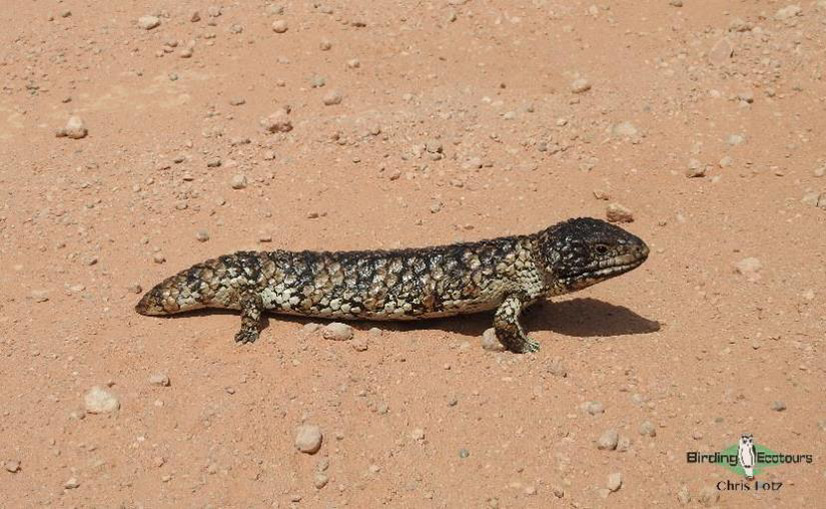
Shingleback (Stumpy-tailed) Lizard.
Day 7, 4th November 2024. Plains-wanderer and other remarkable birds in New South Wales
We started the day trying to locate Pink Cockatoos in and around Ouyen and were initially rewarded with a pair that flew over us, then later by an immensely co-operative pair that sat feeding on the ground close to us! We also got great views of some Mulga Parrots.
We then headed towards our next destination, finding our first Blue-faced Honeyeaters along the way. Further along, we stopped at Lake Tutchewop, where one of the best birds was the luminously colorful White-winged Fairywren. We also saw good numbers of White-fronted Chats. Further along on our drive, we saw a magnificent White-bellied Sea Eagle (very far from the sea!).
After crossing the Murray River into New South Wales, we eventually reached Deniliquin, where we collected a picnic dinner for later, before embarking on an incredibly exciting birding evening (indeed, one of the most exciting birding sessions of the entire tour). We stopped along the way, before dark, for various birds, some of them new for the trip. One of the highlights was an Australian Owlet-nightjar at its nest box. We also saw a Nankeen Night Heron in flight (but had to wait until near the end of the trip to see this species properly). A couple of Banded Lapwings were one of the top birds of this evening’s session. We also saw stacks of Emus. Just before dark, while we were enjoying our picnic dinner, we saw an Australian Hobby and, very briefly, a Black Falcon. An Australian Boobook was more co-operative. At the start of our night drive proper, we managed to find two male Plains-wanderers and one larger, more brightly-colored and nicely patterned female (see comparative photos below), and this was the main reason for our nighttime birding excursion. We then managed to find Stubble Quails (two females and then a well-marked male). Singing Bush Larks, Brown Songlarks, and many Australian Pipits were also around.
Mammal-wise, today was also awesome, with good views of some Fat-tailed Dunnarts and Common Brush-tailed Possums, among a great many kangaroos (species we’d already seen). A Byrne’s (Gibber) Gecko also showed well.

The larger, brighter, female Plains-wanderer we saw tonight.
Mammal-wise, today was also awesome, with good views of some Fat-tailed Dunnarts and Common Brush-tailed Possums, among a great many kangaroos (species we’d already seen). A Byrne’s (Gibber) Gecko also showed well.
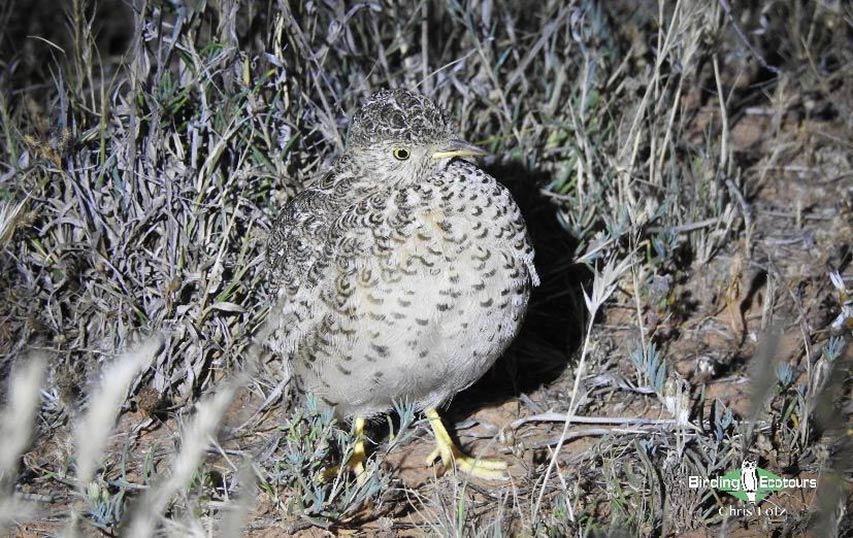
One of the two male Plains-wanderers we saw tonight.
Day 8, 5th November 2024. Deniliquin to Wangaratta
We started the day at the Island Sanctuary, a great birding venue right near our hotel. This was one of the most productive birding walks of the tour! We saw ten parrot species, including our main target, Superb Parrot, and surprisingly excellent views of a pair of Little Lorikeets. One other major parrot highlight was many of the yellow form of Crimson Rosella (not a good name for this form!). We also saw our first friarbirds, Little Friarbird,and Noisy Friarbird, in quick succession. We ended the wonderful birding session here with good views of Eastern Shriketit foraging on bark at eye level.
We then went to the Waring Gardens, also right in Deniliquin, and saw roosting Grey-headed Flying Foxes, impressively large bats. En route to Wangaratta, we saw a pair of Brolgas right next to the road. At our lunch stop on the banks of the Murray River at Tocumwal, just before we re-entered the state of Victoria, was Blue-faced Honeyeater (better views of this colorful honeyeater than before).
We reached the Warby-Ovens National Park in the middle of the afternoon, in good time for some solid birding. Turquoise Parrot was one of our main targets and we saw a brightly colored male fly off the road and some tour participants got good views (we managed to find another male later, which gave everyone in the group a decent view.) We also found a couple of other new birds in the form of the rather drab Fuscous Honeyeater, a White-throated Gerygone, and (briefly) a Restless Flycatcher.
After a very tasty dinner, we went on a night walk and were very pleased to see and hear Barking Owl very nicely, along with great mammals: Squirrel Glider, Eastern Ring-tailed Possums (including one with a baby on its back!), and a Common Brush-tailed Possum.
Day 9, 6th November 2024. Morning birding and then back to Melbourne
After breakfast, we watched a Pacific Koel being mobbed by some Noisy Friarbirds. We then spent a couple of hours birding in the Chiltern-Mt Pilot National Park. Here, we had brief views of a couple of Turquoise Parrots again, and saw a lot of Fuscous Honeyeaters, a couple of Satin Bowerbirds, a Speckled Warbler showing very well, several Olive-backed Orioles, and a beautiful male Mistletoebird.
Down the road, we found a new trip bird in the form of White-winged Triller, but the highlight of the day was finding three Koalas (one of them a baby)! What a morning!
After a particularly good lunch, we drove back to Melbourne to overnight before our morning flight to Brisbane the following day.
Day 10, 7th November 2024. Melbourne to Brisbane flight and transfer to Lamington National Park
We took a morning flight to Brisbane in southern coastal Queensland. Soon after arriving in Brisbane, we headed for the mangroves at Nudgee Beach. Here we found Mangrove Gerygone, Mangrove Honeyeater, and Torresian Crow, among other bird species we’d seen earlier in the trip.
We then headed into the hills towards the famous O’Reilly’s Rainforest Lodge, making some productive stops along the way. Our first stop was at Kumbartcho Sanctuary, where we loved seeing two very impressive and beautiful Powerful Owls, a roosting Tawny Frogmouth, a very tame Australian Brushturkey, Lewin’s Honeyeaters, etc.
After an excellent lunch, we continued further, stopping at a site for Grey-headed and Black Flying Foxes roosting together, some also flying around and a couple of them carrying babies. An Eastern Water Dragon showed well. We also saw a couple of Whip-tailed (Pretty-faced) Wallabies as we ascended.
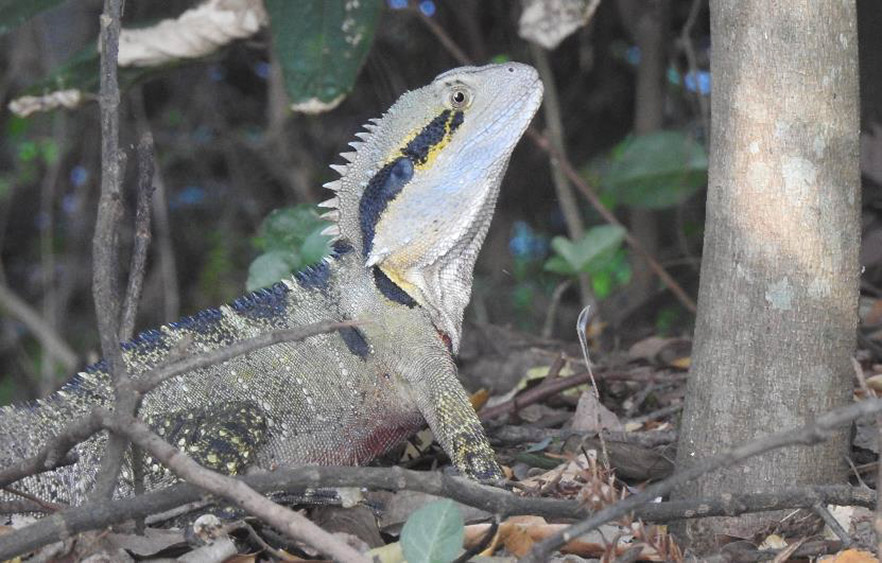
The striking face pattern of the Eastern Water Dragon is seen well in this photo.
We eventually reached Lamington National Park, specifically O’Reilly’s, the famous birding lodge in the middle of the rainforest. We immediately found some spectacular birds like Regent Bowerbird, Australian King Parrot, Crimson Rosellas, a Wonga Pigeon and many others. Soon after arriving, we headed for dinner, much anticipating the next morning.
A couple of the group joined the glowworm experience, and also saw a Carpet Python during this. Eastern Water Skink was also around the lodge.
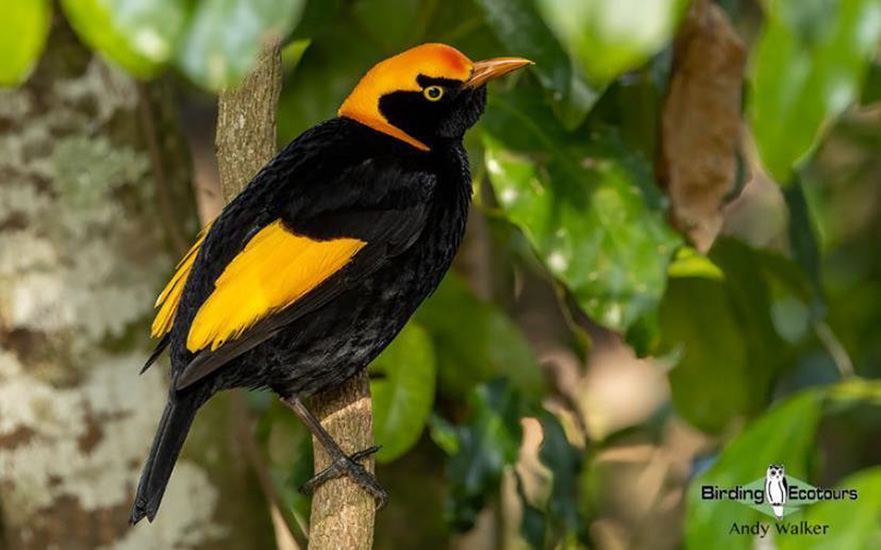
Regent Bowerbird is always a showy treat at O’Reilly’s! (This photo is from last year’s tour).
Day 11, 8th November 2024. Full day birding around O’Reilly’s Rainforest Lodge
O’Reilly’s is justly famous, and it lived up to its reputation today. During the morning sessions before and after our buffet breakfast, we racked up a long bird list of forest specials. Paradise Riflebirds (which are birds of paradise) “sang” from the treetops and sometimes gave quite good views. A couple of the tour participants saw a male performing its display. Green Catbirds also showed quite well at times. We were amused by the constant yowling of these birds; it sounded like there were cats in the tops of trees throughout the day. Eastern Whipbirds show extremely well around O’Reilly’s and this was also another bird that was hilarious to hear with its whip-like song; this is a characteristic sound of the forest here, just like the catbirds’. We also heard what sounded exactly like a dog barking…but we knew there were no dogs anywhere near the lodge. It turned out to be an Albert’s Lyrebird mimicking a dog and throwing in its own, and other bird sounds, at times. We got great views of the lyrebird after a bit of patience, it was excellent to be able to compare this bird with the Superb Lyrebird we’d seen earlier in the tour. The lodge area hosts a number of great-looking pigeons and we enjoyed seeing really close-up Wonga Pigeons as well as nicely-marked White-headed and strange Topknot Pigeons. We also saw a couple of Brown Cuckoo-Doves. Australian Brushturkeys were all over the place, and as tame as anything. Gorgeous Crimson Rosellas and Australian King Parrots sat on top of peoples’ heads (yes, really!). The logo bird of O’Reilly’s, and one of the beautiful bird species the lodge is famous for, is the Regent Bowerbird and, as usual, several showed magnificently. There were also a good number of Satin Bowerbirds around and we particularly enjoyed seeing a male at a bower. The trails around the lodge had lots of tame and close-up Australian Logrunners, Yellow-throated Scrubwrens, Large-billed Scrubwrens, White-browed Scrubwrens and Eastern Yellow Robins. There were many Australian Rufous Fantails, including one sitting on a nest. We also saw a few beautiful Black-faced Monarchs.
After lunch and a bit of a break, our afternoon session also proved good, although there were not many birds we could still add to our list because we’d already seen so much. We did find a Spectacled Monarch and we had fairly good views (albeit high up in a tree) of a male Rose Robin, another stunning bird! A pair of Noisy Pittas worked us hard: we saw them but not so well.
Mammal-wise, we saw two tiny kangaroo types today, Red-necked and Red-legged Pademelons. Karin and Teresa saw an Eastern Ringtail Possum well when walking back to their room. Reptile-wise, a Southern Angle-headed Dragon showed well. We also saw a scarce, very beautiful butterfly, Richmond Birdwing.
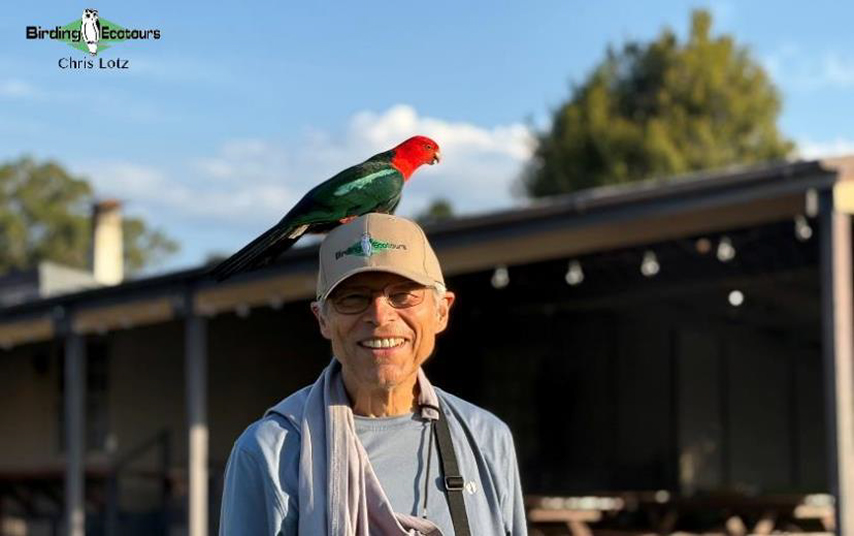
An Australian King Parrot on Bill’s head!
Day 12, 9th November 2024. Brisbane area birding and flight to Cairns
Our final early morning birding session in Lamington National Park was great, with displaying Paradise Riflebirds being the major highlight. We also saw a male Rose Robin again, in particularly good light. A Red-legged Pademelon showed well.
As we descended back towards Brisbane we stopped to look for Bell Miners that were vocalizing, but could not see any (we were a bit short of time). The consolation prize was, however, a few rare, and absolutely beautiful Glossy Black Cockatoos feeding in casuarina trees right next to the road where we stopped to try for the Bell Miners. We also saw Yellow-tailed Black Cockatoos again on the drive down the mountain. At one point, a Red-bellied Black Snake crossed the road in front of us and, of course, we stopped for a good look.
We eventually got back to the Brisbane area where we had a bit more than an hour to bird the Sandy Camp Road Wetlands. We were greeted by a Buff-banded Rail! Our main targets were two new species of fairywren, both of which we saw very well (including the spectacularly colorful males): the Red-backed Fairywren and the localized Variegated Fairywren. We also briefly saw (but heard nicely), Tawny Grassbird (we’d see it very well later though) and various other species.
We then took a flight to Cairns. After checking in at our hotel, we had about an hour for birding before dinner, and we explored the lively and atmospheric Cairns Esplanade – the southern part. Here, we added good numbers of new birds to our burgeoning bird list. Omnipresent Torresian Imperial Pigeons showed very well. A few Varied Honeyeaters put in appearances and sang nicely for us. Nankeen Night Herons, a couple of Double-eyed Fig Parrots and stacks of Rainbow Lorikeets were also around. As it started getting dark, several Bush Stone-curlews emerged, and an Orange-footed Scrubfowl flew up into its roost tree. A Pacific Reef Heron flew past us. Upon returning to the hotel, we found a Tropical House Gecko.
Day 13, 10th November 2024. Cairns to Mission Beach
We started the day with a superb breakfast on the Cairns Esplanade. The tide was perfect for shorebirds, many of which were nicely visible from our café. After breakfast, we enjoyed an awesome walk along the beach, northwards along the esplanade to some mangroves. During this walk, we scoped lots of shorebird species including Terek Sandpiper, Sharp-tailed Sandpiper, Marsh Sandpiper, Bar-tailed Godwit,many Great Knots,some Grey-tailed Tattlers, a couple of Eurasian Whimbrels,and a good number of Far Eastern Curlews. The highlight, however, was a really close-up Beach Stone-Curlew catching and eating a crab; this is a really impressive bird! There were also several plover species around including Siberian Sand Plover, Greater Sand Plover, Red-capped Plover, Pacific Golden Plover, and Black-fronted Dotterel. A Caspian Tern, a Lesser Crested Tern,and many Common and Australian Terns also showed well.
We also saw three ridiculously close-up Red-tailed Black Cockatoos, a pair of Torresian Kingfishers, a couple of Hornbill Friarbirds, and some Bar-shouldered and Peaceful Doves. Many Australian Swiftlets winged low over an open field. A Mangrove Robin sat quietly in the mangroves and an Australian Brushturkey strutted proudly across an adjacent open field.
We then drove to the nearby Centenary Lakes. Here we found an immature Red-necked Crake, an Orange-footed Scrubfowl, a few Magpie Geese, a Black Butcherbird, and a pair of stunning Sahul Sunbirds at a nest.
Reptile-wise, we saw a Lace Monitor, initially on the ground before it climbed a tree, moving to the far side of the trunk to try and hide from us. There were also many butterflies around, including the huge and gorgeous Cairns Birdwing and the beautiful bright blue Ulysses Butterfly.
Next on the birding menu was the France Road Turf Farm, which was amazing! We got nice views of a couple of Australian Pratincoles, a Little Curlew, a couple of flocks of Plumed Whistling Ducks, a number of Australian Pipits, and various other species.
We then headed southwards to Etty Bay, stopping to admire Metallic Starlings with their impressively shiny plumages and red eyes. After some patience at Etty Bay itself, we eventually found our big target for the afternoon, Southern Cassowary, an adult with a chick! It was spectacular seeing this giant prehistoric-looking flightless bird with its brightly colored head walking on the beach, with its very different-looking youngster always close. What an incredible experience. We also briefly saw some other nice birds here, including Forest Kingfisher and Scaly-breasted Munia.
We finally headed to Mission Beach where we were to spend the night. As we approached, we saw a few Agile Wallabies, including some carrying joeys in their pouches.
Day 14, 11th November 2024. Mission Beach to Lake Eacham (Crater Lakes National Park)
After breakfast, we headed to the Henrietta Creek Campground in the Wooroonooran National Park. This was immensely productive, allowing us to see a plethora of new species for the trip in a short space of time. A pair of Barred Cuckooshrikes and a beautiful Grey Goshawk sat in the same tree, until the goshawk flew out and gave us a great flight view. Four new honeyeater species for the trip came in the forms of Yellow-spotted Honeyeater, Cryptic Honeyeater, Dusky Myzomela (Honeyeater) and Macleay’s Honeyeater. A female Victoria’s Riflebird also sipped nectar like a large honeyeater, affording excellent views. A Grey Whistler and a White-eared Monarch cooperated well. Mammal-wise, we saw a Musky Rat Kangaroo.
Our next stop en route to Crater Lakes National Park was equally productive. We added more birds to our list: Bridled Honeyeater, Brown Gerygone, Fairy Gerygone, Varied Triller (briefly), Sahul Cicadabird, Grey-headed Robin (briefly), Yellow-breasted Boatbill and, last but not least, a pair of beautiful Pied Monarchs.
As we traveled further, we stopped for a pair of Sarus Cranes next to the road. Awesome. We eventually reached the park, where Lake Eacham provided great scenery and brilliant birds. The main target here was Tooth-billed Bowerbird, which we saw and heard very well. A pair of Superb Fruit Doves co-operated less well as they were only seen by some of the group. We did get close views of our first Pale Yellow Robin.
Peterson Creek in Yungaburra was the final place we visited today. The main target here was Platypus, which we saw very well after a lot of patience. A couple of Eastern Saw-shelled Turtles pretended to be platypuses as we waited! Hundreds of Spectacled Flying Foxes, a Green Ring-tailed Possum, Coppery Brush-tailed Possum and Red-legged Pademelon were also on show. Bird-wise, we saw some goodies here, the new trip birds being Rufous Shrikethrush bathing, and a close-up, beautiful Azure Kingfisher.
Day 15, 12th November 2024. Crater Lakes National Park to Mareeba
We started the day with some exciting birding around our lodge next to Lake Eacham. Beautiful Spotted Catbirds and Victoria’s Riflebirds showed extremely well. Rose-crowned Fruit Doves called constantly from the treetops but were difficult to see. Rufous Shrikethrushes and a good number of other bird species we’d already seen before, were around. Another Musky Rat Kangaroo showed quite well.
An outside breakfast at The Gillies Café and Bar was great for birding. Channel-billed Cuckoo and Pacific Koel both showed well as we enjoyed our breakfasts, but the best birds were Double-eyed Fig Parrots,which wefinally had good views of, after them giving us the run around over the last couple of days.
The picnic area at Mount Hypipamee National Park was the next stop. We heard a Wompoo Fruit Dove here but could not see it. We did see a juvenile male Golden Bowerbird at its bower. A gorgeous Scarlet Myzomela showed quite well albeit a bit distantly (high in a tall tree!). Atherton Scrubwren and Mountain Thornbill were two localized “LBJs” (Little Brown Jobs) we found nicely. Bower’s Shrikethrush and Grey-headed Robin also cooperated well.
Hasties Swamp National Park gave an impressive spectacle with its huge numbers of birds, such as Magpie Geese and other waterbirds. Wandering and Plumed Whistling Ducks were around and we managed to scope a Buff-banded Rail lurking around. We also scoped three attractive Latham’s Snipes. Some spectacularly plumaged Red-backed Fairywrens were close-up, as were a couple of unusually showy Tawny Grassbirds.
Continuing our journey, a couple of Oriental Dollarbirds and Forest Kingfishers sat on powerlines as we drove past. We also stopped along the road to look at a Yellow-faced Whipsnake.
We eventually arrived in Mareeba (where we would spend the night), had lunch and then checked into our hotel during the less productive heat of the day. At a nearby birding site, we enjoyed seeing some Scaly-breasted Lorikeets, Noisy and Hornbill Friarbirds, White-bellied Cuckooshrike, a couple of Yellow Honeyeaters and a Lemon-bellied Flyrobin. Unfortunately, we were unable to lay eyes on a singing (but hiding) White-browed Robin.
We ended another good day at The Granite Gorge Nature Park. Mammals were good here, with Agile Wallabies and a close-up Mareeba Rock Wallaby carrying a joey. We also saw some truly fantastic birds here, like a Great Bowerbird at its bower, a few Squatter Pigeons, and three Pale-headed Rosellas feeding on the ground. A majestic pair of Wedge-tailed Eagles flew overhead. A Blue-faced Honeyeater showed very well in the sunlight.
Day 16, 13th November 2024. Mareeba to Daintree River for boat cruise via several birding sites, transfer back to Cairns
This was a long but spectacular day. We started with some birding at the Mareeba Rodeo Grounds, where we found many great birds. Highlights were Black-throated Finches, Double-barred Finches, Grey-crowned Babblers, several Squatter Pigeons, a few Pale-headed Rosellas, and Yellow Honeyeaters.
We then returned to our White-browed Robin site but again only heard it. We did see our first Brown-backed Honeyeaters and several other good birds, including another spectacular male Red-backed Fairywren.
Our next stop was, excitingly, for Australian Bustard, which we found after a bit of searching. A Wedge-tailed Eagle and some Whistling Kites flew overhead. A couple of Blue-winged Kookaburras showed nicely, as did some Red-winged Parrots. We got super views of another Great Bowerbird at its bower. A couple of Banded Honeyeaters showed fleetingly (but we caught up with this bird properly at our next stop, getting fabulous views).
Abattoir Swamp was the next place we visited, and we saw our main target here, Lovely Fairywren. Other good birds at this site included Northern Fantail, Leaden Flycatcher, Red-browed Finch, White-cheeked Honeyeater, Banded Honeyeater showing far better than before, and Scarlet Myzomela (Honeyeater). We then went to a nearby (secret) site where we found Buff-breasted Paradise Kingfisher; what a bird! And our next site generated a close-up roosting Papuan Frogmouth, some Chestnut-breasted Mannikins, Pale-yellow Robin and a close-up Platypus!
We then headed for Daintree Village from where we did a relaxing but rewarding boat cruise for the rest of the afternoon. A few Radjah Shelducks, a Channel-billed Cuckoo, several male and female (both very attractive but so different) Shining Flycatchers (including a rufous female on a nest), a close-up Azure Kingfisher (what a beaut!), a couple of Common Sandpipers, several Striated Herons, a Black Bittern (awesome!), a fantastic Brahminy Kite, some Large-billed Gerygones, and a Varied Triller all put in appearances. Right at the end of the cruise, a Great-billed Heron showed well. During this cruise, we also enjoyed seeing a humongous (13 foot, or four meters!) Saltwater Crocodile and a Common Tree Snake.
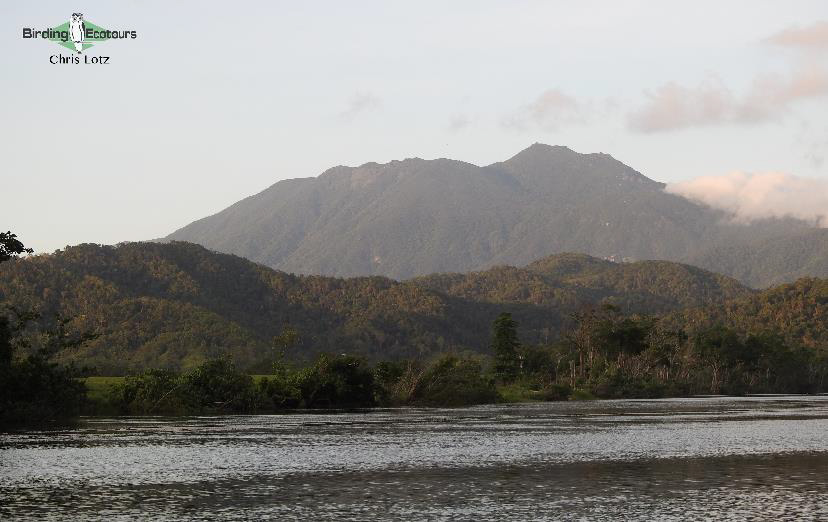
The end of a great day on the Daintree River.
Day 17, 14th November 2024. Great Barrier Reef
Today we took a boat to Michaelmas Cay and Hastings Reef. Some of us did some wonderful snorkeling here at the Great Barrier Reef. Birding was good, especially around the tiny island of Michaelmas Cay. We saw hundreds of Brown Noddies, many Lesser Crested Terns, smaller numbers of Greater Crested Terns, sleek-looking Black-naped Terns, diminutive Little Terns, elegant Bridled and Sooty Terns, and some Common Terns. There were a lot of breeding Brown Boobies and a handful of Red-footed Boobies. Three Great Frigatebirds hung around. A few Ruddy Turnstones were present. A Green Sea Turtle was a welcome sight, but provided only fleeting views.
After our return to Cairns, we had our last dinner together before saying our goodbyes, always a tough part of the tour.
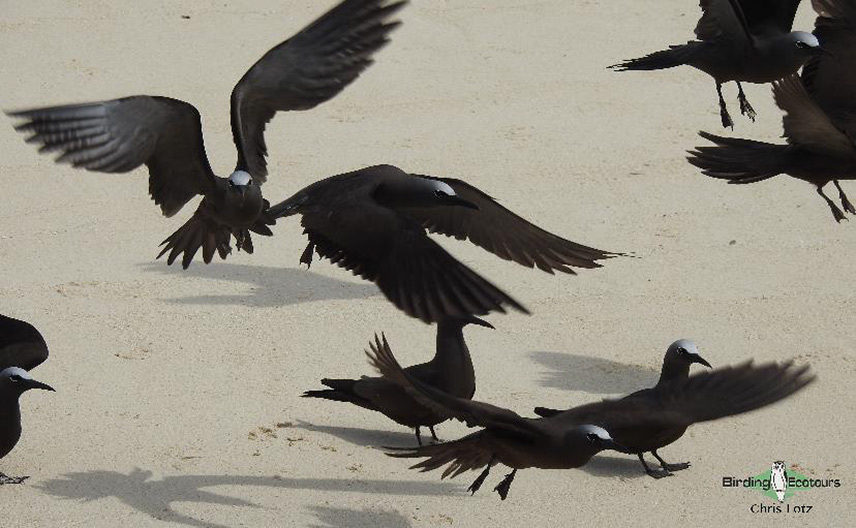
Brown Noddies at Michaelmas Cay, a tiny part of the humongous Great Barrier Reef.
In the afternoon, we had a final couple of rainforest patches to check, and we were successful in finding a pair of Papuan Frogmouths and then the spectacular Buff-breasted Paradise Kingfisher, the latter a fresh arrival from New Guinea and staking a claim to his summer breeding territory.
The final birding of the day was on the Daintree River, where we enjoyed a dusk boat cruise, adding several new species for the tour, and improving views and photos of others, including Spotted Whistling Duck, Radjah Shelduck, Papuan Frogmouth, Great-billed Heron, Black Bittern, Azure Kingfisher, Brahminy Kite, Pacific Koel, Green Oriole, Shining Flycatcher, Wompoo Fruit Dove (on a nest), and plenty more. Additional highlights included Green Tree Snake and Saltwater Crocodile sightings.
After enjoying our Daintree River boat trip, we drove back to Cairns for the final night of the tour. During our drive back to Cairns we discussed possible “bird of the trip” candidates, and it was very hard to pick a top bird given all the high-quality birds we’d seen over the previous weeks. Some of the favorites included (in no particular order!); Pink Cockatoo, Red-backed Fairywren, Southern Cassowary, Plains-wanderer, Golden Bowerbird, and Red-chested Buttonquail.
Day 18, 15th November 2024. Flights homeward
This was a travel day with everyone leaving Cairns at different times.
Bird List – Following IOC August 2024 (version 14.2)
Birds ‘heard only’ are marked with (H) after the common name, all other species were seen. Australian endemics are marked as such. The following notation after species names is used to show conservation status following BirdLife International: EN = Endangered, VU = Vulnerable, NT = Near-threatened.
| Common Name | Scientific Name |
| Cassowaries, Emu (Casuariidae) | |
| Southern Cassowary | Casuarius casuarius |
| Emu (Endemic) | Dromaius novaehollandiae |
| Magpie Goose (Anseranatidae) | |
| Magpie Goose | Anseranas semipalmata |
| Ducks, Geese, Swans (Anatidae) | |
| Spotted Whistling Duck | Dendrocygna guttata |
| Plumed Whistling Duck (Endemic) | Dendrocygna eytoni |
| Wandering Whistling Duck | Dendrocygna arcuata |
| Cape Barren Goose (Endemic) | Cereopsis novaehollandiae |
| Black Swan (Endemic) | Cygnus atratus |
| Radjah Shelduck | Radjah radjah |
| Australian Shelduck (Endemic) | Tadorna tadornoides |
| Pink-eared Duck (Endemic) | Malacorhynchus membranaceus |
| Maned Duck (Endemic) | Chenonetta jubata |
| Australasian Shoveler | Spatula rhynchotis |
| Pacific Black Duck | Anas superciliosa |
| Grey Teal | Anas gracilis |
| Chestnut Teal (Endemic) | Anas castanea |
| Hardhead | Aythya australis |
| Blue-billed Duck (Endemic) | Oxyura australis |
| Musk Duck (Endemic) | Biziura lobata |
| Megapodes (Megapodiidae) | |
| Australian Brushturkey (Endemic) | Alectura lathami |
| Malleefowl (Endemic) – VU | Leipoa ocellata |
| Orange-footed Scrubfowl | Megapodius reinwardt |
| Guineafowl (Numididae) | |
| Helmeted Guineafowl | Numida meleagris |
| Pheasants & Allies (Phasianidae) | |
| Stubble Quail (Endemic) | Coturnix pectoralis |
| Frogmouths (Podargidae) | |
| Papuan Frogmouth | Podargus papuensis |
| Tawny Frogmouth (Endemic) | Podargus strigoides |
| Owlet-nightjars (Aegothelidae) | |
| Australian Owlet-nightjar | Aegotheles cristatus |
| Swifts (Apodidae) | |
| Australian Swiftlet (Endemic) | Aerodramus terraereginae |
| Bustards (Otididae) | |
| Australian Bustard | Ardeotis australis |
| Cuckoos (Cuculidae) | |
| Pheasant Coucal | Centropus phasianinus |
| Pacific Koel | Eudynamys orientalis |
| Channel-billed Cuckoo | Scythrops novaehollandiae |
| Horsfield’s Bronze Cuckoo (H) | Chalcites basalis |
| Shining Bronze Cuckoo (H) | Chalcites lucidus |
| Fan-tailed Cuckoo (H) | Cacomantis flabelliformis |
| Pigeons, Doves (Columbidae) | |
| Rock Dove | Columba livia |
| White-headed Pigeon (Endemic) | Columba leucomela |
| Spotted Dove | Spilopelia chinensis |
| Brown Cuckoo-Dove (Endemic) | Macropygia phasianella |
| Pacific Emerald Dove | Chalcophaps longirostris |
| Common Bronzewing (Endemic) | Phaps chalcoptera |
| Brush Bronzewing (Endemic) | Phaps elegans |
| Crested Pigeon (Endemic) | Ocyphaps lophotes |
| Squatter Pigeon (Endemic) | Geophaps scripta |
| Wonga Pigeon (Endemic) | Leucosarcia melanoleuca |
| Peaceful Dove | Geopelia placida |
| Bar-shouldered Dove | Geopelia humeralis |
| Wompoo Fruit Dove (H) | Ptilinopus magnificus |
| Superb Fruit Dove | Ptilinopus superbus |
| Rose-crowned Fruit Dove | Ptilinopus regina |
| Torresian Imperial Pigeon | Ducula spilorrhoa |
| Topknot Pigeon (Endemic) | Lopholaimus antarcticus |
| Rails, Crakes & Coots (Rallidae) | |
| Buff-banded Rail | Hypotaenidia philippensis |
| Australian Crake (Endemic) | Porzana fluminea |
| Black-tailed Nativehen (Endemic) | Tribonyx ventralis |
| Dusky Moorhen | Gallinula tenebrosa |
| Eurasian Coot | Fulica atra |
| Australasian Swamphen | Porphyrio melanotus |
| Red-necked Crake | Rallina tricolor |
| Pale-vented Bush-hen (H) | Amaurornis moluccana |
| Cranes (Gruidae) | |
| Sarus Crane – VU | Antigone antigone |
| Brolga | Antigone rubicunda |
| Grebes (Podicipedidae) | |
| Australasian Grebe | Tachybaptus novaehollandiae |
| Hoary-headed Grebe (Endemic) | Poliocephalus poliocephalus |
| Great Crested Grebe | Podiceps cristatus |
| Buttonquail (Turnicidae) | |
| Painted Buttonquail (Endemic) | Turnix varius |
| Stone-curlews, Thick-knees (Burhinidae) | |
| Beach Stone-curlew | Esacus magnirostris |
| Bush Stone-curlew | Burhinus grallarius |
| Oystercatchers (Haematopodidae) | |
| Pied Oystercatcher | Haematopus longirostris |
| Stilts, Avocets (Recurvirostridae) | |
| Pied Stilt | Himantopus leucocephalus |
| Banded Stilt (Endemic) | Cladorhynchus leucocephalus |
| Red-necked Avocet (Endemic) | Recurvirostra novaehollandiae |
| Plovers (Charadriidae) | |
| Pacific Golden Plover | Pluvialis fulva |
| Hooded Plover (Endemic) – VU | Charadrius cucullatus |
| Black-fronted Dotterel | Charadrius melanops |
| Banded Lapwing (Endemic) | Vanellus tricolor |
| Masked Lapwing | Vanellus miles |
| Red-kneed Dotterel | Erythrogonys cinctus |
| Siberian Sand Plover | Anarhynchus mongolus |
| Greater Sand Plover | Anarhynchus leschenaultii |
| Red-capped Plover | Anarhynchus ruficapillus |
| Jacanas (Jacanidae) | |
| Comb-crested Jacana | Irediparra gallinacea |
| Plains-wanderer (Pedionomidae) | |
| Plains-wanderer (Endemic) – EN | Pedionomus torquatus |
| Sandpipers, Snipes (Scolopacidae) | |
| Eurasian Whimbrel | Numenius phaeopus |
| Little Curlew | Numenius minutus |
| Far Eastern Curlew – EN | Numenius madagascariensis |
| Bar-tailed Godwit | Limosa lapponica |
| Latham’s Snipe | Gallinago hardwickii |
| Terek Sandpiper | Xenus cinereus |
| Common Sandpiper | Actitis hypoleucos |
| Grey-tailed Tattler | Tringa brevipes |
| Marsh Sandpiper | Tringa stagnatilis |
| Wood Sandpiper | Tringa glareola |
| Common Greenshank | Tringa nebularia |
| Ruddy Turnstone | Arenaria interpres |
| Great Knot – EN | Calidris tenuirostris |
| Sharp-tailed Sandpiper – VU | Calidris acuminata |
| Red-necked Stint | Calidris ruficollis |
| Pectoral Sandpiper | Calidris melanotos |
| Curlew Sandpiper – NT | Calidris ferruginea |
| Coursers, Pratincoles (Glareolidae) | |
| Australian Pratincole | Stiltia isabella |
| Gulls, Terns, Skimmers (Laridae) | |
| Brown Noddy | Anous stolidus |
| Sooty Tern | Onychoprion fuscatus |
| Bridled Tern | Onychoprion anaethetus |
| Little Tern | Sternula albifrons |
| Australian Tern | Gelochelidon macrotarsa |
| Caspian Tern | Hydroprogne caspia |
| Whiskered Tern | Chlidonias hybrida |
| Common Tern | Sterna hirundo |
| Black-naped Tern | Sterna sumatrana |
| Lesser Crested Tern | Thalasseus bengalensis |
| Greater Crested Tern | Thalasseus bergii |
| Silver Gull | Chroicocephalus novaehollandiae |
| Pacific Gull (Endemic) | Larus pacificus |
| Albatrosses (Diomedeidae) | |
| Shy Albatross | Thalassarche cauta |
| Petrels, Shearwaters, Diving Petrels (Procellariidae) | |
| Short-tailed Shearwater | Ardenna tenuirostris |
| Frigatebirds (Fregatidae) | |
| Great Frigatebird | Fregata minor |
| Gannets, Boobies (Sulidae) | |
| Australasian Gannet | Morus serrator |
| Red-footed Booby | Sula sula |
| Brown Booby | Sula leucogaster |
| Anhingas, Darters (Anhingidae) | |
| Australasian Darter | Anhinga novaehollandiae |
| Cormorants, Shags (Phalacrocoracidae) | |
| Little Pied Cormorant | Microcarbo melanoleucos |
| Black-faced Cormorant (Endemic) | Phalacrocorax fuscescens |
| Little Black Cormorant | Phalacrocorax sulcirostris |
| Great Cormorant | Phalacrocorax carbo |
| Ibises, Spoonbills (Threskiornithidae) | |
| Australian White Ibis | Threskiornis molucca |
| Straw-necked Ibis | Threskiornis spinicollis |
| Royal Spoonbill | Platalea regia |
| Yellow-billed Spoonbill (Endemic) | Platalea flavipes |
| Herons, Bitterns (Ardeidae) | |
| Black Bittern | Botaurus flavicollis |
| Nankeen Night Heron | Nycticorax caledonicus |
| Pacific Reef Heron | Egretta sacra |
| Little Egret | Egretta garzetta |
| White-faced Heron | Egretta novaehollandiae |
| Striated Heron | Butorides striata |
| White-necked Heron | Ardea pacifica |
| Great Egret | Ardea alba |
| Plumed Egret | Ardea plumifera |
| Eastern Cattle Egret | Ardea coromanda |
| Great-billed Heron | Ardea sumatrana |
| Pelicans (Pelecanidae) | |
| Australian Pelican | Pelecanus conspicillatus |
| Kites, Hawks, Eagles (Accipitridae) | |
| Black-shouldered Kite (Endemic) | Elanus axillaris |
| Pacific Baza | Aviceda subcristata |
| Little Eagle (Endemic) | Hieraaetus morphnoides |
| Wedge-tailed Eagle | Aquila audax |
| Grey Goshawk (Endemic) | Tachyspiza novaehollandiae |
| Brown Goshawk | Tachyspiza fasciata |
| Swamp Harrier | Circus approximans |
| Black Kite | Milvus migrans |
| Whistling Kite | Haliastur sphenurus |
| Brahminy Kite | Haliastur indus |
| White-bellied Sea Eagle | Icthyophaga leucogaster |
| Barn Owls (Tytonidae) | |
| Greater Sooty Owl (H) | Tyto tenebricosa |
| Lesser Sooty Owl (Endemic) (H) | Tyto multipunctata |
| Owls (Strigidae) | |
| Powerful Owl (Endemic) | Ninox strenua |
| Barking Owl | Ninox connivens |
| Australian Boobook | Ninox boobook |
| Rollers (Coraciidae) | |
| Oriental Dollarbird | Eurystomus orientalis |
| Kingfishers (Alcedinidae) | |
| Buff-breasted Paradise Kingfisher | Tanysiptera sylvia |
| Laughing Kookaburra (Endemic) | Dacelo novaeguineae |
| Blue-winged Kookaburra | Dacelo leachii |
| Forest Kingfisher | Todiramphus macleayii |
| Torresian Kingfisher | Todiramphus sordidus |
| Sacred Kingfisher | Todiramphus sanctus |
| Azure Kingfisher | Ceyx azureus |
| Bee-eaters (Meropidae) | |
| Rainbow Bee-eater | Merops ornatus |
| Caracaras, Falcons (Falconidae) | |
| Nankeen Kestrel | Falco cenchroides |
| Australian Hobby | Falco longipennis |
| Brown Falcon | Falco berigora |
| Black Falcon (Endemic) | Falco subniger |
| Peregrine Falcon | Falco peregrinus |
| Cockatoos (Cacatuidae) | |
| Yellow-tailed Black Cockatoo (Endemic) | Zanda funerea |
| Red-tailed Black Cockatoo (Endemic) | Calyptorhynchus banksii |
| Glossy Black Cockatoo (Endemic) – VU | Calyptorhynchus lathami |
| Gang-gang Cockatoo (Endemic) – VU | Callocephalon fimbriatum |
| Galah (Endemic) | Eolophus roseicapilla |
| Pink Cockatoo (Endemic) | Cacatua leadbeateri |
| Little Corella | Cacatua sanguinea |
| Long-billed Corella (Endemic) | Cacatua tenuirostris |
| Sulphur-crested Cockatoo | Cacatua galerita |
| Old World Parrots (Psittaculidae) | |
| Superb Parrot (Endemic) | Polytelis swainsonii |
| Regent Parrot (Endemic) | Polytelis anthopeplus |
| Australian King Parrot (Endemic) | Alisterus scapularis |
| Red-winged Parrot | Aprosmictus erythropterus |
| Red-rumped Parrot (Endemic) | Psephotus haematonotus |
| Eastern Bluebonnet (Endemic) | Northiella haematogaster |
| Mulga Parrot (Endemic) | Psephotellus varius |
| Crimson Rosella (Endemic) | Platycercus elegans |
| Pale-headed Rosella (Endemic) | Platycercus adscitus |
| Eastern Rosella (Endemic) | Platycercus eximius |
| Australian Ringneck (Endemic) | Barnardius zonarius |
| Blue-winged Parrot (Endemic) – VU | Neophema chrysostoma |
| Turquoise Parrot (Endemic) | Neophema pulchella |
| Little Lorikeet (Endemic) | Parvipsitta pusilla |
| Musk Lorikeet (Endemic) | Glossopsitta concinna |
| Scaly-breasted Lorikeet (Endemic) | Trichoglossus chlorolepidotus |
| Rainbow Lorikeet (Endemic) | Trichoglossus moluccanus |
| Double-eyed Fig Parrot | Cyclopsitta diophthalma |
| Pittas (Pittidae) | |
| Noisy Pitta | Pitta versicolor |
| Lyrebirds (Menuridae) | |
| Albert’s Lyrebird (Endemic) | Menura alberti |
| Superb Lyrebird (Endemic) | Menura novaehollandiae |
| Bowerbirds (Ptilonorhynchidae) | |
| Green Catbird (Endemic) | Ailuroedus crassirostris |
| Spotted Catbird (Endemic) | Ailuroedus maculosus |
| Tooth-billed Bowerbird (Endemic) | Scenopoeetes dentirostris |
| Golden Bowerbird (Endemic) | Prionodura newtoniana |
| Regent Bowerbird (Endemic) | Sericulus chrysocephalus |
| Satin Bowerbird (Endemic) | Ptilonorhynchus violaceus |
| Great Bowerbird (Endemic) | Chlamydera nuchalis |
| Australasian Treecreepers (Climacteridae) | |
| White-throated Treecreeper (Endemic) | Cormobates leucophaea |
| Brown Treecreeper (Endemic) | Climacteris picumnus |
| Australasian Wrens (Maluridae) | |
| Lovely Fairywren (Endemic) | Malurus amabilis |
| Purple-backed Fairywren (Endemic) | Malurus assimilis |
| Variegated Fairywren (Endemic) | Malurus lamberti |
| Superb Fairywren (Endemic) | Malurus cyaneus |
| Splendid Fairywren (Endemic) | Malurus splendens |
| Red-backed Fairywren (Endemic) | Malurus melanocephalus |
| White-winged Fairywren (Endemic) | Malurus leucopterus |
| Southern Emu-wren (Endemic) | Stipiturus malachurus |
| Mallee Emu-wren (Endemic) – EN | Stipiturus mallee |
| Striated Grasswren (Endemic) | Amytornis striatus |
| Honeyeaters (Meliphagidae) | |
| Eastern Spinebill (Endemic) | Acanthorhynchus tenuirostris |
| White-fronted Chat (Endemic) | Epthianura albifrons |
| Brown-backed Honeyeater | Ramsayornis modestus |
| Tawny-crowned Honeyeater (Endemic) | Gliciphila melanops |
| Dusky Myzomela | Myzomela obscura |
| Scarlet Myzomela (Endemic) | Myzomela sanguinolenta |
| Little Friarbird | Philemon citreogularis |
| Hornbill Friarbird (Endemic) | Philemon yorki |
| Noisy Friarbird | Philemon corniculatus |
| Macleay’s Honeyeater (Endemic) | Xanthotis macleayanus |
| Striped Honeyeater (Endemic) | Plectorhyncha lanceolata |
| Painted Honeyeater (Endemic) | Grantiella picta |
| Crescent Honeyeater (Endemic) | Phylidonyris pyrrhopterus |
| New Holland Honeyeater (Endemic) | Phylidonyris novaehollandiae |
| White-cheeked Honeyeater (Endemic) | Phylidonyris niger |
| Brown Honeyeater | Lichmera indistincta |
| Banded Honeyeater (Endemic) | Cissomela pectoralis |
| White-eared Honeyeater (Endemic) | Nesoptilotis leucotis |
| Blue-faced Honeyeater | Entomyzon cyanotis |
| Brown-headed Honeyeater (Endemic) | Melithreptus brevirostris |
| White-naped Honeyeater (Endemic) | Melithreptus lunatus |
| Yellow Honeyeater (Endemic) | Stomiopera flava |
| Yellow-spotted Honeyeater (Endemic) | Meliphaga notata |
| Lewin’s Honeyeater (Endemic) | Meliphaga lewinii |
| White-fronted Honeyeater (Endemic) | Purnella albifrons |
| Yellow-tufted Honeyeater (Endemic) | Lichenostomus melanops |
| Cryptic Honeyeater (Endemic) | Microptilotis imitatrix |
| Varied Honeyeater | Gavicalis versicolor |
| Mangrove Honeyeater (Endemic) | Gavicalis fasciogularis |
| Singing Honeyeater (Endemic) | Gavicalis virescens |
| Fuscous Honeyeater (Endemic) | Ptilotula fusca |
| Yellow-plumed Honeyeater (Endemic) | Ptilotula ornata |
| White-plumed Honeyeater (Endemic) | Ptilotula penicillata |
| Yellow-faced Honeyeater (Endemic) | Caligavis chrysops |
| Little Wattlebird (Endemic) | Anthochaera chrysoptera |
| Red Wattlebird (Endemic) | Anthochaera carunculata |
| Spiny-cheeked Honeyeater (Endemic) | Acanthagenys rufogularis |
| Bridled Honeyeater (Endemic) | Bolemoreus frenatus |
| Bell Miner (Endemic) (H) | Manorina melanophrys |
| Noisy Miner (Endemic) | Manorina melanocephala |
| Yellow-throated Miner (Endemic) | Manorina flavigula |
| Bristlebirds (Dasyornithidae) | |
| Rufous Bristlebird (Endemic) | Dasyornis broadbenti |
| Pardalotes (Pardalotidae) | |
| Spotted Pardalote (Endemic) | Pardalotus punctatus |
| Striated Pardalote (Endemic) | Pardalotus striatus |
| Australasian Warblers (Acanthizidae) | |
| Pilotbird (Endemic) – VU | Pycnoptilus floccosus |
| Speckled Warbler (Endemic) | Pyrrholaemus sagittatus |
| Shy Heathwren (Endemic) | Hylacola cauta |
| Chestnut-rumped Heathwren (Endemic) (H) | Hylacola pyrrhopygia |
| Striated Fieldwren (Endemic) | Calamanthus fuliginosus |
| Rufous Fieldwren (Endemic) | Calamanthus campestris |
| Weebill (Endemic) | Smicrornis brevirostris |
| Yellow-throated Scrubwren (Endemic) | Neosericornis citreogularis |
| White-browed Scrubwren (Endemic) | Sericornis frontalis |
| Spotted Scrubwren (Endemic) | Sericornis maculatus |
| Atherton Scrubwren (Endemic) – VU | Sericornis keri |
| Large-billed Scrubwren (Endemic) | Sericornis magnirostra |
| Yellow Thornbill (Endemic) | Acanthiza nana |
| Striated Thornbill (Endemic) | Acanthiza lineata |
| Inland Thornbill (Endemic) | Acanthiza apicalis |
| Mountain Thornbill (Endemic) – VU | Acanthiza katherina |
| Brown Thornbill (Endemic) | Acanthiza pusilla |
| Chestnut-rumped Thornbill (Endemic) | Acanthiza uropygialis |
| Buff-rumped Thornbill (Endemic) | Acanthiza reguloides |
| Brown Gerygone (Endemic) | Gerygone mouki |
| Fairy Gerygone | Gerygone palpebrosa |
| Large-billed Gerygone | Gerygone magnirostris |
| White-throated Gerygone | Gerygone olivacea |
| Mangrove Gerygone | Gerygone levigaster |
| Western Gerygone (Endemic) | Gerygone fusca |
| Australasian Babblers (Pomatostomidae) | |
| Grey-crowned Babbler | Pomatostomus temporalis |
| White-browed Babbler (Endemic) | Pomatostomus superciliosus |
| Chestnut-crowned Babbler (Endemic) | Pomatostomus ruficeps |
| Logrunners (Orthonychidae) | |
| Australian Logrunner (Endemic) | Orthonyx temminckii |
| Whipbirds (Psophodidae) | |
| Eastern Whipbird (Endemic) | Psophodes olivaceus |
| Jewel-babblers, Quail-thrushes (Cinclosomatidae) | |
| Chestnut Quail-thrush (Endemic) | Cinclosoma castanotum |
| Boatbills (Machaerirhynchidae) | |
| Yellow-breasted Boatbill | Machaerirhynchus flaviventer |
| Woodswallows, Butcherbirds & Allies (Artamidae) | |
| White-breasted Woodswallow | Artamus leucorynchus |
| Masked Woodswallow (Endemic) | Artamus personatus |
| White-browed Woodswallow (Endemic) | Artamus superciliosus |
| Black-faced Woodswallow | Artamus cinereus |
| Dusky Woodswallow (Endemic) | Artamus cyanopterus |
| Black Butcherbird | Melloria quoyi |
| Australian Magpie | Gymnorhina tibicen |
| Grey Butcherbird (Endemic) | Cracticus torquatus |
| Pied Butcherbird (Endemic) | Cracticus nigrogularis |
| Pied Currawong (Endemic) | Strepera graculina |
| Grey Currawong (Endemic) | Strepera versicolor |
| Cuckooshrikes (Campephagidae) | |
| Barred Cuckooshrike | Coracina lineata |
| Black-faced Cuckooshrike | Coracina novaehollandiae |
| White-bellied Cuckooshrike | Coracina papuensis |
| Sahul Cicadabird | Edolisoma tenuirostre |
| White-winged Triller | Lalage tricolor |
| Varied Triller | Lalage leucomela |
| Australo-Papuan Bellbirds (Oreoicidae) | |
| Crested Bellbird (Endemic) (H) | Oreoica gutturalis |
| Shriketits (Falcunculidae) | |
| Eastern Shriketit (Endemic) | Falcunculus frontatus |
| Whistlers & Allies (Pachycephalidae) | |
| Gilbert’s Whistler (Endemic) | Pachycephala inornata |
| Grey Whistler | Pachycephala simplex |
| Australian Golden Whistler | Pachycephala pectoralis |
| Rufous Whistler | Pachycephala rufiventris |
| Bower’s Shrikethrush (Endemic) – VU | Colluricincla boweri |
| Rufous Shrikethrush | Colluricincla rufogaster |
| Grey Shrikethrush | Colluricincla harmonica |
| Figbirds, Old World Orioles, Piopios (Oriolidae) | |
| Australasian Figbird | Sphecotheres vieilloti |
| Olive-backed Oriole | Oriolus sagittatus |
| Green Oriole | Oriolus flavocinctus |
| Drongos (Dicruridae) | |
| Spangled Drongo | Dicrurus bracteatus |
| Fantails (Rhipiduridae) | |
| Willie Wagtail | Rhipidura leucophrys |
| Northern Fantail | Rhipidura rufiventris |
| Grey Fantail | Rhipidura albiscapa |
| Australian Rufous Fantail | Rhipidura rufifrons |
| Monarchs (Monarchidae) | |
| Spectacled Monarch | Symposiachrus trivirgatus |
| Black-faced Monarch | Monarcha melanopsis |
| White-eared Monarch (Endemic) | Carterornis leucotis |
| Pied Monarch (Endemic) | Arses kaupi |
| Magpie-lark | Grallina cyanoleuca |
| Leaden Flycatcher | Myiagra rubecula |
| Satin Flycatcher | Myiagra cyanoleuca |
| Shining Flycatcher | Myiagra alecto |
| Restless Flycatcher (Endemic) | Myiagra inquieta |
| Crows, Jays (Corvidae) | |
| Torresian Crow | Corvus orru |
| Forest Raven (Endemic) | Corvus tasmanicus |
| Little Raven (Endemic) | Corvus mellori |
| Australian Raven (Endemic) | Corvus coronoides |
| Australian Mudnesters (Corcoracidae) | |
| White-winged Chough (Endemic) | Corcorax melanorhamphos |
| Apostlebird (Endemic) | Struthidea cinerea |
| Birds-of-paradise (Paradisaeidae) | |
| Paradise Riflebird (Endemic) | Ptiloris paradiseus |
| Victoria’s Riflebird (Endemic) – VU | Ptiloris victoriae |
| Australasian Robins (Petroicidae) | |
| Red-capped Robin (Endemic) | Petroica goodenovii |
| Rose Robin (Endemic) | Petroica rosea |
| Flame Robin (Endemic) | Petroica phoenicea |
| Scarlet Robin (Endemic) | Petroica boodang |
| Lemon-bellied Flyrobin | Microeca flavigaster |
| Jacky Winter | Microeca fascinans |
| Southern Scrub Robin (Endemic) | Drymodes brunneopygia |
| Grey-headed Robin (Endemic) | Heteromyias cinereifrons |
| White-browed Robin (Endemic) (H) | Poecilodryas superciliosa |
| Hooded Robin (Endemic) | Melanodryas cucullata |
| Mangrove Robin | Peneothello pulverulenta |
| Eastern Yellow Robin (Endemic) | Eopsaltria australis |
| Pale-yellow Robin (Endemic) | Tregellasia capito |
| Larks (Alaudidae) | |
| Singing Bush Lark | Mirafra javanica |
| Eurasian Skylark | Alauda arvensis |
| Swallows, Martins (Hirundinidae) | |
| White-backed Swallow (Endemic) | Cheramoeca leucosterna |
| Welcome Swallow | Hirundo neoxena |
| Fairy Martin | Petrochelidon ariel |
| Tree Martin | Petrochelidon nigricans |
| Reed Warblers & Allies (Acrocephalidae) | |
| Australian Reed Warbler (H) | Acrocephalus australis |
| Grassbirds & Allies (Locustellidae) | |
| Little Grassbird | Poodytes gramineus |
| Brown Songlark (Endemic) | Cincloramphus cruralis |
| Tawny Grassbird | Cincloramphus timoriensis |
| Cisticolas & Allies (Cisticolidae) | |
| Golden-headed Cisticola (H) | Cisticola exilis |
| White-eyes (Zosteropidae) | |
| Silvereye | Zosterops lateralis |
| Starlings, Rhabdornises (Sturnidae) | |
| Metallic Starling | Aplonis metallica |
| Common Myna | Acridotheres tristis |
| Common Starling | Sturnus vulgaris |
| Thrushes (Turdidae) | |
| Russet-tailed Thrush | Zoothera heinei |
| Bassian Thrush (Endemic) | Zoothera lunulata |
| Common Blackbird | Turdus merula |
| Flowerpeckers (Dicaeidae) | |
| Mistletoebird | Dicaeum hirundinaceum |
| Sunbirds (Nectariniidae) | |
| Sahul Sunbird | Cinnyris frenatus |
| Old World Sparrows, Snowfinches (Passeridae) | |
| House Sparrow | Passer domesticus |
| Waxbills, Munias & Allies (Estrildidae) | |
| Diamond Firetail (Endemic) – VU | Stagonopleura guttata |
| Red-browed Finch (Endemic) | Neochmia temporalis |
| Double-barred Finch (Endemic) | Stizoptera bichenovii |
| Australian Zebra Finch (Endemic) | Taeniopygia castanotis |
| Black-throated Finch (Endemic) | Poephila cincta |
| Scaly-breasted Munia | Lonchura punctulata |
| Chestnut-breasted Mannikin | Lonchura castaneothorax |
| Wagtails, Pipits (Motacillidae) | |
| Australian Pipit | Anthus australis |
| Finches, Euphonias (Fringillidae) | |
| European Goldfinch | Carduelis carduelis |
| Total seen | 378 |
| Total heard only | 12 |
| Total recorded | 390 |
Mammal List (Mammal Watching April 2024)
Australian endemic mammals are marked as such. The following notation after species names is used to show conservation status following IUCN List of Threatened Species: EN = Endangered, VU = Vulnerable.
| Common Name | Scientific Name |
| Platypuses (Ornithorhynchidae) | |
| Platypus (Endemic) | Ornithorhynchus anatinus |
| Dasyures (Dasyuridae) | |
| Fat-tailed Dunnart (Endemic) | Sminthopsis crassicaudata |
| Musky Rat-kangaroos (Hypsiprymnodontidae) | |
| Musky Rat Kangaroo (Endemic) | Hypsiprymnodon moschatus |
| Kangaroos, Wallabies and Allies (Macropodidae) | |
| Mareeba Rock Wallaby (Endemic) | Petrogale mareeba |
| Red-legged Pademelon | Thylogale stigmatica |
| Red-necked Pademelon (Endemic) | Thylogale thetis |
| Western Grey Kangaroo (Endemic) | Macropus fuliginosus |
| Eastern Grey Kangaroo (Endemic) | Macropus giganteus |
| Agile Wallaby | Notamacropus agilis |
| Whip-tailed Wallaby (Endemic) | Notamacropus parryi |
| Red-necked Wallaby (Endemic) | Notamacropus rufogriseus |
| Red Kangaroo (Endemic) | Osphranter rufus |
| Gliders, Trioks, and Allies (Petauridae) | |
| Sugar Glider (Endemic) | Petaurus breviceps |
| Squirrel Glider (Endemic) | Petaurus norfolcensis |
| Ringtail Possums (Pseudocheiridae) | |
| Southern Greater Glider (Endemic) – VU | Petauroides volans |
| Eastern Ring-tailed Possum (Endemic) | Pseudocheirus peregrinus |
| Green Ring-tailed Possum (Endemic) | Pseudochirops archeri |
| Cuscuses and Brushtail Possums (Phalangeridae) | |
| Coppery Brush-tailed Possum (Endemic) | Trichosurus johnstonii |
| Common Brush-tailed Possum (Endemic) | Trichosurus vulpecula |
| Koalas (Phascolarctidae) | |
| Koala (Endemic) – VU | Phascolarctos cinereus |
| Wombats (Vombatidae) | |
| Common Wombat (Endemic) | Vombatus ursinus |
| Old World Fruit Bats (Pteropodidae) | |
| Black Flying Fox | Pteropus alecto |
| Spectacled Flying Fox – EN | Pteropus conspicillatus |
| Gray-headed Flying Fox (Endemic) – VU | Pteropus poliocephalus |
| Eared Seals (Otariidae) | |
| Afro-Australian Fur Seal | Arctocephalus pusillus |
| Canids (Canidae) | |
| Red Fox | Vulpes vulpes |
| Hares and Rabbits (Leporidae) | |
| European Hare | Lepus europaeus |
| European Rabbit – EN | Oryctolagus cuniculus |
| Total | 28 |
Reptile List (Reptiles of the World October 2023)
Australian endemic reptiles are marked as such.
| Common Name | Scientific Name |
| Crocodiles (Crocodylidae) | |
| Saltwater Crocodile | Crocodylus porosus |
| Colubrid Snakes (Colubridae) | |
| Common Tree Snake | Dendrelaphis punctulatus |
| Elapid Snakes (Elapidae) | |
| Yellow-faced Whipsnake (Endemic) | Demansia psammophis |
| Red-bellied Black Snake (Endemic) | Pseudechis porphyriacus |
| Dragons (Agamidae) | |
| Mallee Dragon (Endemic) | Ctenophorus fordi |
| Australian Water Dragon (Endemic) | Intellagama lesueurii |
| Southern Angle-Headed Dragon (Endemic) | Lophosaurus spinipes |
| Typical Geckos (Gekkonidae) | |
| Tropical House Gecko | Hemidactylus mabouia |
| Skinks (Scincidae) | |
| Shingleback Lizard (Endemic) | Tiliqua rugosa |
| Eastern Water Skink (Endemic) | Eulamprus quoyii |
| Monitor Lizards (Varanidae) | |
| Sand Goanna (Endemic) | Varanus gouldii |
| Lace Monitor (Endemic) | Varanus varius |
| Pythons (Pythonidae) | |
| Carpet Python | Morelia spilota |
| Australasian Geckos (Diplodactylidae) | |
| Byrne’s Gecko (Endemic) | Lucasium byrnei |
| Austro-American Side-necked Turtles (Chelidae) | |
| Eastern Saw-shelled Turtle (Endemic) | Myuchelys latisternum |
| Typical Sea Turtles (Cheloniidae) | |
| Green Sea Turtle – EN | Chelonia mydas |
| Total | 16 |
DOWNLOAD TRIP REPORT
This is a sample trip report. Please email us ([email protected]) for more trip reports from this destination.
Birding Tour Australia: Eastern Australia – From The Outback To The Wet Tropics
Tour-Specific Information
GENERAL INFORMATION ABOUT AUSTRALIA CAN BE READ HERE
TOUR OUTLINE
This is a comprehensive birding tour of eastern Australia. The first leg of our eastern Australian bird tour starts in Melbourne, Victoria. It makes a circuit around the southeastern Australian state (including a brief foray into southern New South Wales, where we will make a nocturnal trip for the monotypic and extremely rare Plains-wanderer) before returning to Melbourne. The second leg of the tour sees us flying from Melbourne to Brisbane in southern Queensland; here, we will visit the fantastic O’Reilly’s Rainforest Retreat. After our birding in Lamington National Park, we will fly north from Brisbane to Cairns (Far North Queensland) for the third and final leg of the tour. From Cairns, we will make a circuit of the fertile and rainforest-clad Atherton Tablelands and the adjacent dry country lower down in the foothills. While in Queensland, our tour also includes a boat trip to the Great Barrier Reef and a boat cruise along the Daintree River. We will finish up our eastern Australian birdwatching tour back in Cairns, where the tour will conclude.
This is our most popular Australian birdwatching tour. There are a lot of simply incredible birds possible on this eastern Australia birding tour (which also combines perfectly with our Tasmania bird tour, which many people choose to do). Top highlights include Southern Cassowary, Malleefowl, Superb Lyrebird, Albert’s Lyrebird, Brolga, Rufous Scrubbird, Regent Bowerbird, Satin Bowerbird, Golden Bowerbird, Great Bowerbird, Green Catbird, Paradise Riflebird, Victoria’s Riflebird, Australian King Parrot, Gang-gang Cockatoo, Pink (Major Mitchell’s) Cockatoo, Superb Parrot, Shy Heathwren, Striated Fieldwren, Mallee Emu-wren, Superb Fairywren, White-winged Fairywren, Striated Grassbird, Australian Logrunner, Chowchilla, Painted Honeyeater, and Diamond Firetail. This Australian bird tour also offers some excellent and emblematic Australian mammals, such as Platypus, Short-beaked Echidna, Koala, Lumholtz’s Tree Kangaroo, and Red Kangaroo. A high-quality list of reptiles, amphibians, and other critters can be enjoyed too. This is the best birding tour if you’ve never visited Australia before.
The Victoria section of this Australian bird tour may run in reverse to the order advertised in the itinerary, based on the availability of accommodation and local guides. On some occasions, we need to run the tour in reverse, e.g., starting in Cairns and ending in Melbourne with Brisbane in the middle. We will go to exactly the same places but just in the opposite order shown in the online itinerary. Please confirm the order of the route with us prior to purchasing your international flight tickets for the start and end of the tour.
DAILY ACTIVITIES, PHYSICAL REQUIREMENTS, AND TOUR PACE
Our comprehensive eastern Australia birding tour moves at quite a fast pace. We will cover a lot of ground on this Australian birdwatching tour, with a big overland circuit of the western side of Victoria (starting and ending at Melbourne airport) and including a trip into southern New South Wales at Deniliquin. In Victoria, we will visit the towns of Healesville, Wangaratta, Ouyen, Inglewood, and Airey’s Inlet. We will take two domestic flights during our bird tour, Melbourne to Brisbane and Brisbane to Cairns. There will be less driving in Brisbane (southern Queensland) as most of our time will be spent on foot around O’Reilly’s Rainforest Retreat, once we get there, after some birding in the Brisbane mangroves. In northern Queensland, we will take a boat trip onto the Great Barrier Reef, then make a circuit from Cairns south along the coast to Mission Beach, before coming inland and up onto the fertile Atherton Tablelands. After birding the tablelands, we will drop down to the dry north for a different set of birds, before finishing up back at Cairns after a boat cruise along the Daintree River. There is less driving in northern Queensland than in Victoria. This Australian bird tour will cover a wide range of habitats and a big trip list of 375 – 400 bird species should be expected.
In Victoria, we will have long drives of 4 – 6 hours on most days to get between different birding areas. In Queensland, we will have drives of 2 – 3 hours. We will usually have a pre-breakfast early morning birding session and then, after breakfast, do a little more birding in our local area before the heat increases and bird activity drops. We then move off to our next area. We will usually aim to make the drives across the middle of the day and break them up with lunch stops and restroom/coffee breaks.
The tour is generally considered easy to moderate in terms of physical exertion. However, the inland temperatures during the day, even during the spring period, could get high (see the “Weather” section below), so dehydration needs to be always considered a possibility, as does heat stroke and sunburn, etc.
In Victoria, we tend to make short and productive walks from our vehicle in a loop of up to 0.6 – 1.2 miles (1 – 2 kilometers/km), and we may make several of these a day. On a couple of occasions in Victoria, we are likely to make slightly longer walks of 2.5 miles (4 km). In Lamington National Park, we will spend most of our time on foot walking around the forest trails and roads (as well as mooching around the excellent retreat gardens). We will usually make a pre-breakfast walk of 1.2 miles (2 km), a post-breakfast walk of 3.5 – 5 miles (6 – 8 km), and then a late afternoon walk of a similar distance. All walks at O’Reilly’s are totally optional. If you’d rather sit in the garden soaking up the wonderful birds on offer, such as Crimson Rosella, Australian King Parrot, Regent Bowerbird, and Satin Bowerbird, that’s totally fine. In the tropical north of Queensland, we will make short walks of 0.6 – 1.2 miles (1 – 2 km) at different sites, and we might make several of these a day. We usually walk from our hotel to the quay to meet our reef trip boat, this is 0.6 miles (1 km). The trail at Mount Lewis is the hardest trail as it involves some incline and maneuvering around fallen trees and some rocks, but it’s still relatively easy, and we will take it at a slow birding pace. Walking in Victoria is often on fairly flat but rough (uneven) ground with rabbit holes and loose rocks, so care needs to be taken. In some areas, such as the mallee habitats, we will be walking in very spiky spinifex grass. Snakes should always be considered when on foot on the whole tour route.
We will make a few general nighttime trips for nocturnal birds and wildlife during the tour (weather permitting), as well as the specific Plains-wanderer trip (see details below). Most owling/mammal-watching sessions will last an hour or so, usually after dinner, and these are all optional.
TRANSPORTATION
We will use 12-seater minibuses on this tour; these will be collected in each city we arrive in and dropped back off there on our return. There will be limited baggage space, so please pack as lightly as possible for the tour (including within the seating area). We will have some long drives on the tour, particularly in Victoria (often on long straight roads). Some of the drives, particularly in Queensland, will involve long and windy mountain roads, so if you suffer from motion sickness, you might want to be prepared for that (e.g., the drive up to and down from O’Reilly’s Rainforest Retreat, the drive up and down Mount Lewis, and as we climb up and drop off the Atherton Tablelands). When we make our Plains-wanderer trip, the group might get split into two vehicles with our local guides; these might be 4×4 Toyota Hilux / Landcruiser-type vehicles. See the “Plains-wanderer Trip” section below for more information.
We will make two boat trips on this tour, see the “Boat Trips” section below, and we will also take two domestic flights during this tour, see the “Domestic Flights” section below.
BOAT TRIPS
We will take a boat trip out onto the Great Barrier Reef. This is not a private reef trip, and there will be up to around 30 participants on the boat. This is one of the smaller boats that goes to the reef, and it is usually the first boat there, which means we will likely get to Michaelmas Cay prior to too much disturbance. The boat has a no-shoe policy, so footwear should be removed upon entering. We will be out on the water from around 07:30 hrs. to around 15:00 hrs.
The boat has toilets, and we will have meals (a morning snack and lunch) and drinks onboard. You will need to bring your own personal water supply for the day, though additional drinks can be purchased throughout the day whilst on the boat. We will get on and off the boat in Cairns Marina, so this is a dry boarding/disembarking. There are opportunities for diving and snorkeling while on this trip – which is highly recommended. The reef trip company does not supply towels; usually, our hotel in Cairns will allow us to take a beach towel for the day for a small deposit.
The boat has a medium-sized lounge with air-conditioning as well as a top deck with seating (no aircon here, but there is often a cooling breeze). It is very easy to get sunburnt on this trip, so please bring plenty of suncream, as well as sunglasses (strong glare) and a sunhat. Swimwear is best worn on the boat as a base layer, and the reef trip company will provide wetsuits (necessary in “stinger season” – which refers to jellyfish present at certain times of the year). The reef trip company provides snorkeling equipment (including a limited supply of prescription masks – for a deposit payable/held on credit card). The reef trip company provides a health and safety questionnaire on arrival, and it is essential that you fill this out with the correct information. The reef trip company’s word on the boat is final, and your health and safety is their (and our) paramount concern.
We will usually try and land on Michaelmas Cay to observe the breeding birds at close range; however, if tidal or weather conditions prevent us from doing so, we will try and circumnavigate the island in a smaller glass-bottomed boat. The exact activities of the day are totally weather and tide-dependent. If you suffer from motion sickness, you may need to take medication for this trip. If we do land on Michaelmas Cay, it will be a wet landing and re-entry, usually up to ankles, rarely your knees; the boat can usually land against the sandy beach.
We will also take a boat trip on the Daintree River during the tour; this is a small boat, like a speedboat. We will journey along the wide Daintree River and then enter smaller, narrower tributaries that take us close into the mangroves, where we are seeking the rarer and more secretive species. The boat has a pop-up cover for the sun, but this inhibits viewing, so we usually try not to use it. We will be exposed to the elements on this trip, so a sunhat, sunglasses, and sunscreen are essential (as well as potentially a rain jacket/poncho if the weather looks threatening). Note on the larger river section we might move quite quickly, so watch out for your hat blowing off! The boat trip is usually around two hours in duration and often starts at dawn or ends at dusk, mainly depending on the tidal situation. Do not dangle your hands out of the boat into the water – there are Saltwater Crocodiles here – see the “Safety” section below.
If you’d like further information on either of these boat trips, please contact us.
DOMESTIC FLIGHTS
This tour requires two domestic flights (Melbourne to Brisbane and Brisbane to Cairns). The costs for these flights are not included in the tour cost. Once we confirm the tour, we will purchase flight tickets for everyone in the group at the same time to ensure we are all on the same flights. The additional cost of flights will be added to your tour balance payment, which is due no later than two months prior to departure. Please refer to the Australia general information document regarding important information on baggage allowance (including carry-on allowance). We usually try and make our domestic flights with Qantas or Virgin Australia as we have found they offer the best service.
PLAINS-WANDERER TRIP
While in Deniliquin in New South Wales, we will take a nocturnal trip to look for Plains-wanderer. Depending on the local situation on the vast grass plains these birds inhabit, we may drive around looking for the birds, or walk around to try and locate them. We are usually out searching from dusk until around midnight on this night and return to our accommodation after 1 a.m. (the following day usually gets a later start than usual!).
Walking around at night can be particularly disorienting, so it is essential the group always stays together. Small torches/head torches are essential for seeing where you are putting your feet, and if you have any balance/walking issues, a walking stick/hiking pole is also mandatory. It is very easy to trip and fall in this environment, so extreme care must always be taken. A decent supply of insect repellant is recommended for this trip as it can be quite buggy in some years. This trip is totally optional and if you would rather sit it out, that is fine, though this is one awesome and unique bird, so we do recommend joining the exploration if possible.
On this evening, we usually buy some food from a local bakery or supermarket and create a picnic dinner to be eaten on site or in our hotel rooms prior to departure.
LUGGAGE
Please pack as lightly as possible for this tour, noting the expected weight allowance of the domestic flights detailed above (and in the general information document on Australia) and the limited space inside vehicles. A medium, soft-sided, and robust duffle bag is likely to work best for packing in the tour vehicles and on the planes we will use. You will be expected to load and unload your own bags into and out of vehicles and as we move around airports. A lighter bag is likely to get less tiresome as we move around a lot on this tour, with lots of loading, unloading and repacking required.
We recommend a daypack is used to keep items that you wish to use daily when in the vehicle or when birding in the field (such as binoculars, camera, notebook, field guide, personal supply of water, snacks, umbrella, rain jacket, extra layers of clothing, etc.).
ACCOMMODATION
In Victoria and New South Wales (for one night), we mainly stay in hotels or motels, and in some locations, we stay in caravan sites, utilizing motel-type rooms. We usually change accommodations every night for this section of the tour, except for when we are in Ouyen, Victoria, in the mallee, where we spend two nights. We try to stay in the best accommodation available along our route, but these might still be fairly basic in some remote locations. All accommodation has ensuite bathrooms. At Melbourne airport, we will stay in an airport hotel. Most of the accommodation has Wi-Fi. Some of the accommodation offers breakfast, and we often get these delivered to our rooms the night before or in the morning itself. In some locations, we will eat breakfasts in cafés in nearby towns.
In southern Queensland, we will stay at the wonderful O’Reilly’s Rainforest Retreat for two nights. This is more upmarket accommodation than everywhere else we stay on the tour. This accommodation has ensuite bathrooms and is set in wonderful grounds for birding. We will eat breakfast and dinner in the retreat’s dining room and will have lunches in the café. There is free Wi-Fi in the lodge (usually just in the reception, bar, and restaurant areas).
In northern Queensland, we will stay at a nice hotel on the Cairns esplanade at the start and end of our circuit (luggage can be stored here until our return). For our circuit of northern Queensland, we will stay in a couple of hotels/motels as well as the excellent Chambers Wildlife Rainforest Lodges (top-quality birds and wildlife right outside our rooms). Our accommodation has been chosen for the best access to quality birding areas. All accommodation has Wi-Fi and private ensuite bathrooms. We usually eat meals in nearby towns, rather than at our accommodation, e.g., in nearby cafés or restaurants/pubs.
WEATHER
Because this eastern Australia birding tour covers a vast area, including spring in Victoria as well as tropical Far North Queensland, you should expect quite a temperature range, and suitable clothing will be required.
In Victoria and New South Wales during the time of our tour, nighttime temperatures could drop as low as 46 degrees Fahrenheit (oF) (8 degrees Centigrade/oC); however, we have occasionally had colder. Daytime temperatures in the south could peak at 59 oF (15 oC), and at higher elevations (e.g., the hills around Melbourne and along the Great Ocean Road), it could take a while to reach that temperature. If there is a southerly wind blowing, it can feel much colder with the wind chill (the wind will be coming from Antarctica!). Daytime temperatures in central and northern Victoria and southern New South Wales can reach 86 oF (30 oC); on occasion (particularly if there is a warming wind coming from the northwest), the temperatures can be hotter than this.
In southern Queensland (e.g., Brisbane), it will likely be around 86 oF (30 oC) and usually feels hotter than we will have experienced earlier in the tour, potentially a little more humid too. Up at O’Reilly’s Rainforest Retreat, we will be at around 3,300 feet (1,000 meters); therefore, the temperatures are lower (it can feel cold here at night), and during the day, it is likely to be around 68 – 77 oF (20 – 25 oC).
Northern Queensland (e.g., Cairns) will see similar temperatures to those of Brisbane, but it will be more humid, particularly when we are inside the forest. It will be a touch cooler on the Atherton Tablelands as we will be higher up, and it usually takes a while for the sun’s rays to warm us up – particularly at Chambers Wildlife Rainforest Lodges, where we are situated in a bit of a bowl. At Mareeba, it will be a similar temperature to Brisbane and Cairns but much drier. It will be very hot at Michaelmas Cay (e.g., 95 oF / 35 oC), with no shade.
The sun is strong across Australia, and care should be taken to avoid sunburn and dehydration.
SAFETY
We do not recommend walking around Cairns at night on your own for personal safety reasons. We will usually walk from our chosen restaurant in Cairns to our nearby hotel in the dark, but we will do so as a group. Please do not leave valuables (or anything at any time) inside the vehicle when it is parked to help reduce the risk of anyone breaking into the vehicle. Please keep a close watch on your possessions (e.g., bags, wallet, optics, etc.) when we are out and about in the city.
During the Far Northern Queensland section of this eastern Australian bird tour (e.g., once we start the Cairns section of the tour), we need to take care due to the presence of Saltwater Crocodiles that can occur in or near the smallest waterbodies; they can also be found up to 0.6 miles (1 km) away from water. At times, we will be birding within habitats that crocodiles inhabit, such as rivers (including inland rivers – “crocs” can occur over 124 miles (200 km) from the coast), coastal mangroves, and wetlands. Please do not stand close to the water’s edge or go anywhere near water at night. Crocodile warning signs are often in place and should always be adhered to. Please refer to the Croc Wise website for more information. We usually only see crocodiles when on our Daintree River boat cruise, but we could come across them in other locations, so it is best to read the information and be prepared (and do not dangle your hands in the water on the river cruise!).
Other general safety information, as referred to in the Australia general information document, should be considered, e.g., regarding snakes, etc.
WHAT TO BRING: CLOTHING AND OTHER ITEMS
The following is a list of useful items to bring on this eastern Australian birding tour and should be read in conjunction with the Australia general information document.
- A field guide to the birds of Australia. See the general information for our recommendations for this tour.
- Hiking pole or walking stick to help on the tracks and trails. While probably not necessary for everyone, a walking stick is compulsory for anyone who is unsteady walking, as we feel this is a safety issue. We don’t want anyone slipping on the trails or anywhere else. Please discuss with us if you are unsure whether you will need one or not.
- Torch (flashlight) and/or headlamp (headtorch), and spare batteries, necessary for when we are making nocturnal walks and when on our Plains-Wanderer
- High-concentration DEET insect repellant or similar.
- A flynet for your face is very useful in some years.
- A small personal first aid kit. See the suggested items from the Centers for Disease Control and Prevention (CDC), here.
- Lightweight hiking boots are likely the best footwear for this tour. A set of sandals (flip-flops) and/or trainers would be useful for walking around some of the accommodations but are not suitable for birding time (consider snake bites, mud, slips, trips, falls, etc.).
- Quick-drying birding clothes (in suitable colors) are the best for this tour, and a good selection of clothing layers (including sweater/jumper/fleece/coat) are also recommended for time at the higher elevations and due to the potential for cool or even cold mornings in Victoria and at elevation in southern Queensland.
- Light rain jacket/poncho (and small umbrella) as rain could fall at any time and any location. Spring in Victoria could see rain showers or prolonged periods of rain if a weather system moves through. In Queensland, there is a slim chance of a tropical rainstorm (usually in the afternoon or at night, if at all). Thunderstorms (including hail) are not uncommon at the time of year we will be in Queensland.
- Some of the places we stay have swimming pools, and we will have excellent and highly recommended swimming opportunities on the Great Barrier Reef, so swimwear is recommended. The reef trip company provides snorkeling gear.
- A small hand towel or washcloth can be handy for cleaning and drying things when in the rainforest and also removing dust in drier areas. Not essential, but it can be useful.
- A dry bag to keep valuable documents in, such as passports, cell phones, wallets, etc., as well as cameras, if it rains or is dry and dusty.
Download Eastern Australia – The Outback tour Information
DOWNLOAD AUSTRALIA GENERAL INFORMATION
Excellent birding – we got good looks at virtually everything on the list...On the whole, I would absolutely recommend this tour to anyone who wanted to go birding in Australia..
Andy Walker is one of the truly exceptional guides in the world of birding. His skill at hearing and then finding birds is amazing. Couple this with an innate sense of getting his clients into the best possible position to both see and photo the given bird elevates him from "competent" to "top notch." I have been with Andy twice and intend to search him out again.
Took the "Eastern Australia: from the Outback to the Wet Tropics" tour, my first with Birding Ecotours. Itinerary fit my needs to a "T". Birds were spectacular and guides made a special effort at each stop to find the unique birds. Also bagged some fascinating fauna including tree kangaroo, platypus, koala, and echinda. Andy Walker was an excellent guide. He is personable with a great sense of humour. His ability to adapt to changing circumstances was excellent. He and his local guide knew the birds and terrain very well, optimized our birding time at each locale by knowing what key species occurred at each, and took pains to be sure everyone got on each bird.
This is the best tour I've been on in my many years of international birding! Excellent guides, good food, great accommodations! Andy was the best guide I have ever had. Knew the birds cold, was able to call them in for photo ops, great on keeping us on schedule and getting where we needed to be, when we needed to be there. Can't say enough good things about Andy.
Andy Walker was absolutely excellent. Knowledgeable, affable, organized, sense of humor, and attentive to everyone. I would go anywhere with Andy.
